
- Indoor Gardening
- Houseplants
- Hydroponics
- Houseplants Made Easy Book


How To Care For A Wandering Jew Plant (Your Complete Guide)
When it comes to houseplants able to brighten up indoor spaces, it doesn’t get much more colorful than the variegated foliage of a Wandering Jew plant ( Tradescantia zebrina ). With their hardy nature and ease of care, they are a perfect choice for those feeling they kill everything they bring indoors. We’ve listed a quick summary of their care below.
How To Care For A Wandering Jew Plant: Grow your Wandering Jew in well-drained soil, kept moist but not soggy through regular watering. Create humidity, keep indoor temperatures between 50°F (10°C) to 85°F (29°C) and fertilize monthly.
Continue reading because we’ve taken all the guesswork out of caring for your Wandering Jew and keeping it healthy and happy for years to come.
How To Care For A Wandering Jew Plant
Wandering Jew plants belong in the Commelinaceae family, which includes around 652 different species. The family is made up of herbs, climbers and several epiphytes, with some used as outdoor and indoor ornamentals like Wandering Jew.
There are three different plants commonly known as Wandering Jews; Tradescantia fluminensis , Tradescantia pallida , and Tradescantia zebrina. Of the three, Tradescantia zebrina is the most common one grown and has the most eye-catching and colorful foliage. All three have the same requirements for care and good growth.
Native to Mexico and Guatemala, Wandering Jew is classified as a tender evergreen perennial that performs well planted outdoors in frost-free regions. Those living in cooler environments can easily grow it as an indoor plant planted either in containers or in hanging baskets. Outdoors it’s typically used as a quick-growing groundcover.
Although a common name shared with several very different plants, Wandering Jew is often called Inch Plant , due to the leaf margins being spaced about an inch apart. You may also find Wandering Jew listed as Zebrina Pendula , but is synonymous with Tradescantia zebrina and is the same plant.

When it comes to Wandering Jew plants, it’s all about the attention-grabbing foliage. The succulent stems give way to leaves that are a deep purple on their undersides with the upper portion striped in silvery-gray and greenish-blue. The oval leaves grow to about 2.5 inches long and the stems grow about 2 feet long. It makes a beautiful plant used in hanging baskets, with the long stems cascading over the side.
Even grown indoors, Wandering Jews have a fast rate of growth and before you know it, the plants will be spilling over your container’s or hanging basket’s sides. Whereas some indoor plants seem to take forever to fill out, this isn’t a problem with properly cared for Wandering Jew plants.
There are several other cultivars (varieties) of Wandering Jew, which include:
- ‘Purpusii’ has unstriped, hairy foliage that is either solid red or reddish-green.
- ‘Quadricolor’ produces metallic-green foliage striped in red, white and green.
Wandering Jew plants are the ideal candidates for beginner houseplant gardeners due to their hardiness and robust growth. Below we’ve outlined all the basics of their proper care, as well as identifying and preventing any potential problems so you can enjoy your Wandering Jew for years to come. The best indoor plants are those that are happy and healthy.

Soil Conditions For Wandering Jew Plants
Wandering Jew plants tolerate growing in a wide range of soils provided they drain well. Although they do tolerate and prefer moist conditions, the soil must drain properly to prevent root and stem rot from occurring. Therefore, it is necessary to use a lighter weight soil mixture in your pots rather than heavier soils that don’t provide proper drainage.
Straight potting soils are usually too heavy, retain too much moisture and have a tendency to leave the soil soggy. You can use a heavier potting soil in your soil mixture, just be sure to incorporate a lighter soil mix to provide the Wandering Jew the drainage required for healthy growth.
Commercial potting mixes work well and many have a slow-release fertilizer mixed in, which cuts down on the need for frequent feedings. The slow-release blends usually continue to fertilize the Wandering Jew for about three months.
You can also make your own soil by mixing several ingredients together such as:
- Using equal parts of compost and a potting mix.
- Mixing equal portions of compost, peat and potting soil or a potting mix.
- Using equal portions of a course sand, compost and potting soil or a potting mix.
Whatever soil you choose to use, just make sure it drains well and contains a bit of fertility for the best performance of your Wandering Jew plants.
Preferred Light Conditions
Although Wandering Jew plants tolerate lower light conditions than many houseplants, to help retain those striking colors the plant is known for, place the container in a location indoors receiving filtered sunlight. If your plant starts losing some of the color in the foliage, move it to a location that receives a bit more light.
In addition, if the lower portion of the stems start suffering leaf drop, the Wandering Jew isn’t get enough light and needs to be relocated to a brighter area inside the home.
Once the warm weather of spring arrives and if you’d like to give your Wandering Jew a bit of a break from its indoor location, place it in an outdoor spot that receives partial sun to partial shade. Moving it to an outdoor location with too much sun may leave the foliage sunburned.
Indoor Temperature Requirements
In the Wandering Jew’s native environment, temperatures are consistently warm without the threat of frosts or freezes. Generally, if the indoor temperatures inside your home are comfortable for you, they will also be comfortable for your Wandering Jew plant.
Indoor temperatures between 50°F (10°C) to 85°F (29°C) are a good range for your Wandering Jew plants. Plants grown in this temperature range produce the healthiest growth.
If you gave your plants a break from their indoor location, just make sure to bring them back indoors before the cold weather of winter strikes.
Water Requirements
Wandering Jews prefer soils that are regularly kept moist, not soggy, compared to many indoor houseplants. However, this doesn’t mean the soil should be kept so wet they never begin to dry out. Keeping the soil too wet for too long promotes rot to set in and you may end up killing your Wandering Jew plants. Your Wandering Jew is more likely to forgive you if you forget to water over watering too much and too often.
A good rule to follow is if the soil starts to feel like it’s about to become very dry, apply water. It’s easy to know exactly when to water by:
- Sticking your finger into the soil and if the top inch is starting to feel dry, water until it runs from the container’s bottom drain holes.
During the warm growing season of spring through summer, you can probably expect to water once each week. However, during winter when the Wandering Jew goes into dormancy (its growth slows), you will probably only need to water about every other week.

Humidity Requirements
Compared to many tropical plants grown indoors, Wandering Jew plants aren’t quite as fussy about humid conditions , but still need some humidity for the best growth and performance. Don’t let the thought of creating a humid environment stress you out because replicating humidity for your indoor plants is relatively easy and basic.
- Fill a spray bottle with room temperature water and mist the Wandering Jew several times each week.
- If you’re growing the Wandering Jew in a container and not in a hanging basket, you can set the pot on a tray of pebbles. As you water, the water seeps from the bottom drain holes onto the tray of pebbles and as it evaporates, it creates a humid environment around the plant.
- If your bathroom gets the appropriate amount of light for the Wandering Jew, you can allow it to grow there. Due to the regular use of water in a bathroom, moisture is created, creating the humidity the Wandering Jew requires.
Fertilizer Needs
Unless the soil mixture contains a slow-release fertilizer blend, which feeds the Wandering Jew for about three months, fertilizing monthly is sufficient for proper growth. You have several choices when it comes to fertilizer you can use for your Wandering Jew plant.
- Use a houseplant fertilizer applied at half-strength, applied when you do your regular watering.
- Use an all-purpose, water-soluble blend for outdoor and indoor plants, applied at half-strength and used during your regular watering schedule.
- If your soil mixture didn’t contain a slow-release fertilizer or it’s been about three months, if one was contained in the soil, you can reapply slow-release fertilizer granules sprinkled over the top of the soil. Follow the package directions on amounts.
When it comes to the appropriate time of year to fertilize the Wandering Jew, only fertilize while it’s actively growing, which is spring throughout summer. In winter, the plant goes through a dormant stage and all growth slows, so there is no need to apply fertilizer. Wait until spring arrives before you resume fertilizing the plant.
The one thing you will need to pay attention to when it comes to fertilizing is the buildup of salts in the soil, which can result in foliage burns. Wandering Jew plants have a low tolerance to salty soils. Preventing any salt buildup is relatively simple:
- If the plant isn’t too big, you can take the entire pot to your sink or bathtub and allow water to run slowly through the soil for about five minutes, flushing out any salts.
- If the plant is too big for indoor flushing, take it outside and allow water from the hose to run slowly through the soil for about five minutes. Allow the water to drain and then bring the plant back indoors.
Pruning Requirements
The pruning needs of Wandering Jew plants are low. If you want to control the size of the plant and promote bushier growth, you can pinch off the tips of the stems. To keep the plant always looking its best, you can trim off any broken, dead or damaged stems and leaves throughout the year.
When using pruning tools to trim your Wandering Jew always make sure they are clean so you don’t transfer any diseases or pests to your plant. This is as easy as wiping off the blades with alcohol.
Some people experience skin irritations when handling the cuttings due to the sap , so if you are unsure if you are one of these unlucky gardeners, it might be best to wear gardening gloves when pruning or handling Wandering Jew cuttings.
Potting Needs
If you purchased your Wandering Jew already potted in a hanging basket or 1-gallon container, it should thrive as is for a year or more before it requires repotting. However, if you received rooted cuttings in smaller containers like 4- to 6-inch pots, you most likely need to repot them into something a bit larger so they can grow properly.
This also cuts down on the need for repotting in a month or two as the Wandering Jew begins to outgrow its present pot.
When it comes to the pot’s material, any type works quite well for growing this plant from clay to plastic. However, if you grow your Wandering Jew in a pot made of a porous material like terra cotta, the soil is going to dry quicker than if it was growing in a plastic pot. This means you will need to water more frequently.
Once your Wandering Jew starts getting too big for its present container, it’s time to repot it into one that is around 1- to 2-inches larger. Although the plant likes a moist soil, make sure the pot has bottom drainage to prevent the possibility of rot due to conditions that are too wet.
If you like, you can dress the container up by placing the draining one inside a decorative pot without bottom drain holes, but be sure to empty out any additional water once the inner pot thoroughly drains.
I think a decorative outer pot can add so much to the beauty of your houseplants, so I do this with almost all of my houseplants. Read this article which discusses my favorite decorative planters if you need some inspiration.
Potting and repotting your Wandering Jew is basic:
- Gently remove the Wandering Jew from its present container, being careful not to break the succulent stems.
- Fill the new container that drains about a quarter of the way full with a fertile, well-drained potting mix.
- Check the Wandering Jew’s root system and if it’s growing bunched together and filled the previous pot, gently tease the roots apart with your hands.
- Place the Wandering Jew into the new container and finish filling it with soil.
- Water the Wandering Jew until it runs from the bottom drain holes and place in a bright location indoors.

Propagating New Plants
When it comes to propagating new plants, Wandering Jew is about as easy as it gets. Even if you have never done this before you should have success starting its cuttings. When you trim to control its size, don’t throw those cuttings away but use them to start additional plants.
You have two choices when it comes to rooting your cuttings and both are easy. The first thing you will want to do is obtain your cuttings. Trim off a 4- to 6-inch cutting from the mother plant and you’re ready to start rooting.
Rooting in Soil
- Fill a 6-inch to 1-gallon container that drains with a rich, well-drained potting mix. Water the soil to settle it.
- Make about a 2-inch indentation in the soil where you want to place the Wandering Jew cutting.
- Remove the bottom leaves from the cutting where you will be inserting it into the soil. You can do this by pinching them off with your fingers.
- Place the cutting into the indentation and firm the soil up around it with your fingers.
- Water the soil again and place the cutting in the same light conditions where the mother plant was thriving. Keep the soil moist but not soggy.
Roots should form in about four weeks and after about eight weeks, the Wandering Jew cuttings should form a new root system.
Rooting in Water
- Fill a glass jar or plastic container with about 3-inches of room temperature water.
- Pinch off any leaves from the section of the Wandering Jew cutting that will be submerged in the water.
- Place the cutting in the water and situate the container in a bright indoor location.
- Change the water in the container about every other week, or when cloudy.
You should start seeing new roots form on the cuttings in several weeks. Once the roots are several inches long, you can repot the cuttings into a draining container filled with fertile, well-drained soil.
Disease Problems
Wandering Jew plants grown indoors are hardy and don’t have major diseases that plague them. However, rot is their biggest enemy and caused by soils that are too heavy and do not drain properly, retaining too much water. Overwatering and planting in pots that don’t drain are other causes of rot problems.
When rot rears its ugly head you’ll notice the bottom stems, as well as the foliage turning black, becoming mushy and the entire plant collapses. If this happens and seems to start affecting the entire Wandering Jew plant, you can trim off healthy, unaffected sections of the stems and repot into fresh, clean soil. Since there is no saving the rot-infected sections, you will have no choice but to discard those portions of the plant.
Steps for preventing problems with rot include:
- Using lightweight potting mixes that drain well and aren’t too heavy, which leads to the soil remaining too wet for too long. Some types of potting soils have a tendency to be heavy and need mixing with a potting mix, compost, coarse sand or peat.
- Don’t overwater your Wandering Jew. Although they prefer growing in moist soils, this doesn’t mean constantly soggy soil. Stick your finger into the soil and if the top inch is starting to become dry, apply water until it runs from the bottom of the pot.
- Make sure the pot you are growing your Wandering Jew in has bottom drainage. If you have placed the pot inside a decorative one that doesn’t drain, make sure to empty all the water from it after you have watered.
Pest Problems
Although indoor Wandering Jew plants are not big candidates for problems with pests, several can cause an infestation and problems. As with any pest problem indoors or outside in the garden, quick control is always the best option to keep your plants healthy. It also assures the pests do not migrate to your other plants causing even bigger problems and headaches.
The pests most likely to infest your indoor Wandering Jew plants are:
- Aphids: Aphids come in a host of different colors and are tiny, pear-shaped, sap-sucking insects that usually congregate in large masses along the Wandering Jew’s stems. In large infestations, they can kill the plant or severely weaken it. If the infestation is small, you can wipe the pests off the stems with a moist cloth. However, if the infestation is large, you will probably have to spray the plant with an insecticidal soap or Neem, reapplying as suggested on the package.
- Spider Mites: Spider mites are another sap-sucking pest that if left unchecked can quickly kill or weaken the Wandering Jew. It is easy to tell if you have a spider mite problem as these tiny, white pests spin fine webbing that covers the plant. Spider mites can be the bane of houseplants so quick control is necessary. Use an insecticidal soap or Neem and spray the entire plant, reapplying as suggested on the product label.
- Whiteflies: Whiteflies are other sap-sucking pests that can quickly kill or weaken your Wandering Jew if not quickly controlled. They are another easily identifiable pest, as just touching the plant sends the tiny whiteflies from the plant’s foliage and into the air, hovering right above it. Control the problem with an insecticidal soap or Neem, spraying the entire plant and reapplying as suggested on the product’s label.
- Mealybugs: Sap-sucking mealybugs show up on the Wandering Jew as cottony masses covering the stems and crotches of the foliage. Control the problem by spraying the entire plant with insecticidal soap or Neem, reapplying as suggested on the product’s label. If the infestation is small, you can also wipe them from the stems and leaves with a damp cloth.

Is Wandering Jew A Perennial?
Wandering Jew plants are considered a tender, evergreen perennial. Unlike annuals, and if grown in preferred conditions with proper care, Wandering Jews should live and keep on growing for quite a few years, both indoors and outside.
Why Are My Wandering Jew Plant’s Leaves Losing Their Color?
If your Wandering Jew is growing in light conditions that are too low, the leaves will start to lose their color and become duller. When grown indoors and to keep the bright color on the foliage, make sure the Wandering Jew is growing in a location receiving bright light.
Why Are My Wandering Jew’s Leaves Dropping?
Wandering Jew plants grown in light conditions that are too low will start dropping leaves at the base of their stems. Solve the problem by moving the plant to an indoor location that is brighter. For the best leaf color and growth, they prefer an indoor location receiving bright light.
Why Are My Wandering Jew Cuttings Rotting In Soil?
If your Wandering Jew cuttings are rotting in soil it could be one of two things causing the problem. The soil you are growing the cuttings in may be infected with a fungus that is infecting them with rot.
You can solve the problem by planting the cutting in a sterile, well-drained potting mix. Another cause might be the soil is remaining too soggy and the container doesn’t drain.
Make sure you are using a soil that drains well and doesn’t remain soggy, do not overwater and use a container with bottom drainage. Water the cuttings when to top inch of soil feels dry to the touch.
Can I Root Wandering Jew Cuttings In Water?
Wandering Jew cuttings root quite well in water. Fill a container with several inches of water, remove any leaves that would be submerged and stick the cut end into the water.
Fill the container with fresh, clean water about every other week. You should start seeing root form on the cuttings in several weeks. Once the roots get several inches in length, you can repot the cuttings in a draining container with rich, well-drained soil.
Are Wandering Jew Plants Toxic?
When it comes to humans, Wandering Jew’s sap can cause skin irritation in humans that are allergic to it. Therefore, it’s best to wear gardening gloves when handling or pruning the plant.
The plant is listed as toxic to dogs and cats, due to its tendency to cause skin allergies and dermatitis. To keep your pets and children safe, make sure you situate your indoor Wandering Jew out of the reach of both.
If you’d like some indoor plants that are non-toxic, check out this article which discusses my favorite non-toxic houseplants.
Do Wandering Jew Plants Produce Blooms?
When grown outdoors, Wandering Jews produce small, three-petaled, lavender flowers, but the plant rarely ever blooms grown indoors as a houseplant.
Can I Grow Wandering Jew Outdoors?
Wandering Jew plants grow as perennials planted outdoors in frost-free climates, however, those with cooler weather can plant outdoors and treat it as an annual.
What’s The Growth Rate For Wandering Jew Plants?
When grown in proper conditions with proper care, Wandering Jew plants are considered fast growers.
Many thanks for reading my guide to Wandering Jew care. This really is a great indoor plant for your home. Beautiful and easy to care for, its hard to go wrong.
If you want more help with looking after your indoor plants, check out the rest of my articles , and head over to my resources section , where I have some great recommended resources, books and equipment to help you grow healthier, more beautiful plants.
Grow. Play. Every Day!

- House & Home
- Houseplants
Wandering Jew Care: How to Grow a Long and Luscious Inch Plant (Tradescantia Zebrina)
Tradescantia zebrina (commonly known as wandering Jew, spiderwort, or inch plant) is popular for a reason: This beginner-friendly houseplant is low-maintenance and grows quickly. It’s also super easy to propagate more plants so you can fill your home with more of the colorful striped foliage the species is known for.
Written by Linda Ly

When it comes to vigorous, colorful, and easy-to-grow hanging houseplants, there aren’t many that can compare to Tradescantia zebrina (known more commonly as wandering Jew—and I’ll touch on the history of that name below). Whether you’re a houseplant beginner or a veteran, most indoor gardeners have owned one of these potted plants at some point.
Keep reading for everything you need to know about Tradescantia zebrina and growing this stunning houseplant in your own home.
Disclosure: If you shop from my article or make a purchase through one of my links, I may receive commissions on some of the products I recommend.

About inch plants
Natural habitat.
Tradescantia zebrina is a native of Central and South America, from Mexico down to Colombia, as well as the Caribbean. Here, it forms part of the undergrowth in lightly forested and often very moist areas. It can form very dense, wide mats thanks to its creeping growth pattern and ability to throw roots extremely quickly.
Unfortunately, its vigorous growth has also made Tradescantia zebrina an invasive plant in some regions. This includes Hawaii, Brazil, and Australia, where the species easily takes hold in moist, forested areas.
As a 2019 study carried out in the Brazilian Atlantic Rainforest notes, this is problematic due to the species choking out native plants.
Some of the above was caused by careless gardeners allowing bits of the plant to get into the wild, where they quickly root. If you’d like to grow spiderworts like this one in your garden, please make sure to dispose properly of any trimmings left after pruning!
This also applies to zebrina’s popular cousins, like Tradescantia fluminensis, T. pallida, and T. spathacea.
Description
It’s not difficult to see why Tradescantia zebrina gained popularity as a houseplant. Wandering spiderwort plants (not to be confused with spider plants , another beginner-friendly species) are low-maintenance and grow just about anywhere—they even just grow in water !
Easy care and quick growth aside, spiderworts are also just good-looking plants. The pointed, oval leaves on thin, fleshy stems overlap slightly and are characterized by their zebra pattern in purple and silvery green. The leaf undersides are deep purple in color and the tiny, three-petaled flowers are bright pink.
Although this species is naturally a creeping plant, it’s often grown indoors in hanging planters. As long as the plant is provided with enough light, the foliage will be very dense and brightly colored, forming a spectacular waterfall that can reach more than 3 feet in length.
What’s in a name? In the case of common houseplants, sometimes a lot.
Tradescantia zebrina is a classic houseplant (I found mention of it in a 1964 German book about houseplants, but it’s probably been around longer than that!) and among most English speakers, it has long been known as wandering Jew. This is probably a reference to the “wandering” nature of the plant, as it does have a creeping growth pattern.
The legend of the wandering Jew is hundreds of years old and is now commonly considered to be rooted in antisemitism. It describes a Jewish man cursed to walk the planet until the Second Coming because he taunted Jesus on his way to the cross.
Because of this, the plant name has partly fallen out of fashion and has been the source of much debate in the plant world over the past few years.
Some plant enthusiasts have embraced the alternative “wandering dude,” which I personally think is a great option.
“Inch plant” (houseplant enthusiasts don’t agree on whether this refers to the fact that it can grow an inch a day, or that you only need an inch of stem to propagate it), “spiderwort,” or “wandering spiderwort” are also popular alternatives, though these are common names for other Tradescantia varieties, such as Tradescantia Nanouk.
The best way to avoid any confusion is to just stick to the scientific name.

Inch plant varieties
There are three subspecies of inch plant (wandering Jew): Tradescantia zebrina var. zebrina, var. flocculosa, and var. mollipila. Unsurprisingly, after it having been a popular houseplant for so many years, nurseries have also managed to create a whole bunch of cultivars through selective cultivation.
A few of the popular Tradescantia zebrina cultivars you may come across in your local plant store include, but are certainly not limited to:
- Tradescantia zebrina ‘Quadricolor’: Yep, as the name suggests, this one adds an extra color to the mix. The leaves are cream, pink-purple, light green, and dark green.
- Tradescantia zebrina ‘Burgundy’: Characterized by its very dark purple coloration.
- Tradescantia zebrina ‘Silver Plus’: Less purple, more shiny silver.
- Tradescantia zebrina ‘Red Gem’: Less silver, more intense (light) purple.
- Tradescantia zebrina ‘Purple Joy’: Less silver, more dark purple.
- Tradescantia zebrina ‘Tikal’: A rare, naturally occurring variety that collectors pay a pretty penny for.
Do keep in mind that most of these cultivars aren’t patented and the amount of mislabeling and variation within a cultivar are both huge. Just growing your wandering Jew in lower-light conditions can completely change the way it looks, so it’s not surprising that confusion sometimes reigns supreme.
Luckily, care is the same across all cultivars, so your best bet is to just enjoy your plant even if you’re not sure what Tradescantia variety you’re dealing with!
Where to buy wandering Jew plants:
- California Tropicals
- Daylily Nursery
- The Green Escape

Caring for an inch plant
Light and temperature.
It’s important to provide your Tradescantia zebrina with enough light. It’s tempting to use plants to brighten up dark, shaded spots in your home, but that just doesn’t work with this one: It loses its dense growth pattern and beautiful coloration in low light.
To prevent your wandering dude plant from growing sparse and green, place it near a window that gets bright indirect light. Some full sun isn’t a problem either, but do make sure you acclimate it gradually to a higher light location.
Temperature-wise, this species is a lot hardier than many of the tender tropicals we like to grow in our homes (like Anthurium andraeanum and Begonia maculata ).
Wandering dude plants can handle a very wide range of temps, making it perfect for those chillier windowsills that your other plants may not appreciate. Room temperature is ideal, but anything between 50°F to 85°F will keep them happy.
Water and humidity
Your Tradescantia zebrina will appreciate lightly moist soil. You can water a bit more during the summer months, when the plant is actively growing and needs a lot of moisture, and less during winter, when soil tends to take significantly longer to dry.
If you’re not sure whether it’s time to water your wandering Jew plant yet, you can always turn to the age-old trick of sticking a finger in the soil.
- If it still feels damp, wait a little longer, until the first inch or two has dried.
- If it feels bone dry, you’ve waited too long; you may also see limp leaves on your plant at this point. It’ll bounce back, but not always without lasting damage.
- If the soil feels wet, you watered too much and need to keep an eye out for root rot.
As for humidity, given its rather wet natural habitat, wandering Jew does appreciate higher air moisture levels. The great thing is, though, that it doesn’t demand it. As long as you keep its soil lightly moist and the air isn’t extremely dry, your plant should do well.
Soil and planting
Wandering Jew is not fussy about its potting mixture at all. I’ve grown it in pure houseplant potting soil with no additives. If you do want to take things to the next level, you can add some perlite and/or peat moss, although this is really not a must.
Most houseplant enthusiasts like to place their wandering Jew in a hanging planter so they can enjoy the look of the leaves cascading down. This is not a must, though. You can also emphasize the species’ creeping growth habit by filling up a large, shallow planter, growing it in a terrarium, or even keeping it in water on a semi-permanent basis.
Recommended products for wandering Jew plant care:
- FoxFarm Ocean Forest Potting Soil
- Espoma Organic Potting Mix
- Perfect Plants Organic Perlite
Fertilizing
Like most other houseplants, Tradescantia zebrina appreciates a bit of fertilizer during the growing season, which extends from spring to early fall. You can use a normal houseplant fertilizer according to the instructions on the bottle.
Don’t fertilize during the winter months unless your plant is growing well. It doesn’t need extra nutrients if it’s inactive.
Recommended fertilizers for wandering Jew plants:
- Houseplant Resource Center Liquid Fertilizer for Houseplants
- Instant Biologics Instant Plant Food (Fizzing Nutrient Tablets)
- Maxsea All-Purpose Seaweed Plant Food
Pruning
There’s a good chance you’ll have to prune your Tradescantia zebrina regularly, because as I mentioned, this is a very quick grower. It also roots very easily, so any trimmings can be replanted! I’ll describe how to do this in the section on propagation below.
Aside from stem trimming, you can remove any dead leaves, which are bound to pop up from time to time in very dense plants like this species.
Dividing or repotting
Inch plants don’t grow by producing plantlets at their base like many other houseplants (such as spider plants ) do. Instead, inch plants spread by rooting along the stems.
This means that division is not really the way to go; keeping these plants manageable is usually done through pruning. You can shape your plant by pinching off any long, leggy stems to create a fuller appearance and control its spread.
You’ll notice that Tradescantia really doesn’t mind being a bit cramped in its planter. Still, it’s a good idea to provide your plant with some fresh soil every year or two by repotting it.

Propagating an inch plant
If you’ve never propagated a houseplant before, this is truly one of the best species to start with. It’s known for rooting extremely quickly in both water and soil, meaning it’s easy to fill endless planters to keep or give away.
All you need to propagate your Tradescantia zebrina is a pair of clean scissors. Here’s how you do it:
- Snip the ends off existing branches. An inch or two with a few leaves works best.
- Remove the leaves at the bottom so part of the stem is exposed.
- Place the cutting in a glass of water to root or plant it directly in soil. You can put cuttings back in the mother plant’s pot to give her a fuller appearance on top.
- It can take a little longer during the winter months, but the first roots should appear within a week or so. You can give soil cuttings a slight tug to verify they’ve rooted.
- Once the first signs of new foliage appear, you’ll know your propagation attempt has been a success!
- If you propagated in water, you can leave the rooted cuttings in water almost indefinitely, although you can also pot them up in fresh soil.

Common questions about inch plant care
How do i make a wandering jew plant bushy.
By their very nature, wandering Jew plants are not bushy. Their creeping growth habit means they naturally grow leggy over time, especially in containers.
However, you can mimic a fuller appearance by strategically pinching off any long, spindly stems to shape the plant more. These stems can also be replanted near the mother plant.
As the baby plants grow, they’ll help fill in sparse areas and create the illusion of a bushy wandering Jew.
How long do wandering Jew plants live?
Wandering Jew plants have a limited lifespan of just a few years, and as a potted plant, you’ll notice your wandering Jew becoming very leggy after just two to three years.
Unlike other fast-growing plants that benefit from pruning, cutting back a wandering Jew doesn’t work well to renew its growth; it simply controls the spread.
The best way to keep your plant coming back year after year is to propagate new plants from stem cuttings, which—fortunately—is super easy with a high success rate.
Is wandering Jew perennial?
Wandering Jew (Tradescantia zebrina) is a trailing evergreen perennial in its native habitat (USDA hardiness zones 9 through 12). Where it’s not winter hardy, wandering Jew is grown year-round as a houseplant.
Are wandering Jew plants toxic to cats and dogs?
Wandering Jew is not considered outright toxic, but it can cause some skin irritation. If your pet gets into your plant, don’t worry too much, although it can be a good idea to have a look in its mouth to make sure there’s no excessive swelling. Be sure to offer water. To prevent skin rash, it can be a good idea to wear gloves if you need to handle your wandering Jew plant. This especially applies if you have sensitive skin.
https://www.cabi.org/isc/datasheet/110354
Racism in Taxonomy: What’s in a Name?
Chiba de Castro, W. A., Xavier, R. O., Garrido, F. H., Romero, J. H., Peres, C. K., & da Luz, R. C. (2019). Fraying around the edges: negative effects of the invasive Tradescantia zebrina Hort. ex Bosse (Commelinaceae) on tree regeneration in the Atlantic Forest under different competitive and environmental conditions. Journal of Plant Ecology, 12(4), 713-721.
Encke, F. (1964). Pflanzen fur Zimmer und Balkon; Auswahl, Pflege, Vermehrung.
I'm a plant lover, passionate road-tripper, and cookbook author whose expert advice and bestselling books have been featured in Time, Outside, HGTV, and Food & Wine. The National Parks Cookbook is my latest book. Garden Betty is where I write about modern homesteading, farm-to-table cooking, and outdoor adventuring—all that encompass a life well-lived outdoors. After all, the secret to a good life is... Read more »
We bought a full grown Bolivian Jewel mid summer last year. It was in a 14” raised pot and flowing 2 foot over the sides. It was beautiful next to our fountain outside. We live in Minnesota so we had to discard it in the late fall since we had no place to care for it in the house. Since we can’t find another like it we’d like to plant one from scratch but how. We still have the pot and riser but have no idea how to start from that. One plant, a few or just how many to make a bushy over grown plant so it looks like the one we purchased last year. Does this make sense or should we just forget it since it is already the middle of May. The greenhouse that we bought it from last summer doesn’t have any this year, just small ones in 4” pots. Thanks
If you can only grow it as an annual (and won’t be overwintering it indoors), you can plant a few smaller ones together to make them look fuller as they grow.
It seems counterproductive to talk about the problematic origin of the name wandering Jew, recommend multiple alternative names (including scientific), but then continue to call it wandering Jew in the rest of the article. If the name is anti-Semitic just set a good example and use a different name.
Leave a Reply Cancel reply
Your email address will not be published. All fields are required.
Save my name and email in this browser for the next time I comment.
This site uses Akismet to reduce spam. Learn how your comment data is processed .
Recommended Reads
- Garden of eatin’

The No-Dig Garden Method: Make Amazing Soil With Less Work

Solarizing Your Garden: How to Use the Sun to Control Weeds and Pests in the Soil

How to Plant a Three Sisters Garden: The Original Companion Plants

How Much to Plant for a Year’s Worth of Food

What You Should Know Before Buying Land (My Real-Life Tips)

Construction Loans: What I Wish I’d Known As a First-Time Borrower

Dark Room? 9 Actually Low-Light Plants That Don’t Need a Lot of Sun

Getting Rid of Fungus Gnats: 11 Remedies That Really Work

My Favorite Ruby Red Sauerkraut Recipe (and Why It’s So Good For You)

How to Make Nukadoko (Fermented Rice Bran Bed) for Pickling

Easy 4-Ingredient Colorful Homemade Pasta—No Pasta Maker Needed

The Best Homemade Limoncello
Want to level up your garden this year.
Sign up for my free, never-boring newsletter and every week you’ll get the game-changing emails you wish you’d gotten sooner.
- About Linda Ly
- What’s In My Garden
- Lazy Gardening Academy
- Sponsorships
- Site Policies

Back to the top
Disclosure: Garden Betty independently selects products to feature on this site. I may receive a commission when you buy something through one of my links. As an Amazon Associate, I earn from qualifying purchases.
© 2024 Garden Betty. All Rights Reserved.


Wandering Jew Plant – Ultimate Care Guide
By: Author Daniel
Posted on Last updated: September 18, 2023

Sharing is caring!
- Facebook 60
You are reading this guide to learn more about the Wandering Jew Plant and its care . I have had this plant at home for many years and write about all the growing aspects in this guide.
Wandering Jew Plant Care Takeaways
What is the wandering jew plant.
The Wandering Jew, or Tradescantia zebrina, by its scientific name (old name = Zebrina pendula) is native to Mexico. It is not to be confused with Tradescantia albiflora, which also goes by Wandering Jew and has very similar care needs.
Tradescantia zebrina has attractive foliage, sporting exciting zebra-patterned leaves. It also flowers. But when kept as a houseplant, this rarely ever happens. It is a fast-growing and excellent groundcover, according to the University of Florida .

W andering Jew Plant Care
To keep your Wandering Jew plant thriving, ensure it receives bright, indirect sunlight. Keep it in average room temperatures of 60-75°F (16-24°C). Fertilize once a month during spring and summer. In winter, relocate the plant to a cooler area with temperatures of 54-59°F (12-15°C).
Table of Contents
Tradescantia zebrina Growing guide
Tradescantia zebrina care is pretty straightforward, but it certainly can’t hurt to glance at the most important things to consider when caring about this herbaceous perennial plant.
So, without further ado, let’s see how you can make your Wandering Jew, aka the Inch plant, as happy as possible.
Any good potting soil will do for your Wandering Jew. For instance, this could be Miracle Gro potting soil readily available online in stores like Amazon.
But these plants not only feel very comfortable in soil but can also be kept in hydroponics .
Sunlight is a vital aspect when it comes to the well-being of most houseplants. Some houseplants do well with moderate sunlight, while others only thrive (or flower) when a certain level of sunlight is guaranteed.
The Wandering Jew does best in bright, indirect sunlight .
If you are unsure what that means, please look at our Light Levels article.
The Wandering Jew, a tropical native, thrives best when the root ball is always well moisturized. Still, waterlogging should be avoided whenever possible, as this could lead to root rot .

This tropical plant does not enjoy limy water. Use soft water whenever possible. Rainwater and distilled water are very good choices.
Temperature
People who own an Inch plant and keep it outside run the risk of exposing it to cold temperatures. This is where indoor plant owners have the upper hand.
Wandering Jews can thrive with average room temperatures of 60 to 75°F (16 to 24°C) if it doesn’t drop for long periods. Anything below 12°C for an extended period could be fatal for your Wandering Jew.
Wandering Jews prefer a humidity of around 70%
The perennial, herbaceous Wandering Jew plant is native to Mexico, Central America, and Colombia, so it should not surprise you that it likes a good deal of humidity.
To ensure high humidity levels, regularly misting your plant is a very good idea. A hand mister filled with water does the trick.
As for the location, you may want to keep your Wandering Jew in the bathroom , as this is usually the place in the house with the highest humidity.
Feed your plant once a month during spring and summer. In winter, fertilizing is not necessary.
Also, fertilization of the Wandering Jew is only necessary from the second year of cultivation or after repotting.
Propagation
It is best propagated through stem tip cuttings. Propagating the Wandering Jew is an easy task.
Wandering Jews don’t get very tall. They might reach a height of about 14 inches (36 cm) when kept indoors. They spread to about 10 inches (25 cm).
(Re)potting
The thing with the Wandering Jew is that it grows fast , hence its nickname “Inch plant.” Because of its fast-growing pace, the plant usually gets very leggy, and leaves are often lost near the base of the plant.
Repotting is pivotal for keeping the root system healthy regardless of the actual plant species. However, how often a houseplant needs to be repotted depends on various factors.
Some houseplants grow incredibly fast, so they need to be repotted often. Others, on the other hand, grow very slowly, so repotting is not a top priority.
That said, repotting your Wandering Jew occasionally is a good idea.
How long does a Wandering Jew live?
As far as the longevity of Wandering Jews goes, they often don’t get older than 2 to 3 years.

Wandering Jew Watering
Water about once every 5-7 days in spring and summer. Keep the soil slightly humid. Do not let the Wandering Jew dry out between waterings. Use your index finger to check if the soil is dry down 1-2 inches of soil (2.5 – 5 cm).
Reduce watering to every 10-14 days in autumn and winter.
Wandering Jew Propagation
The Wandering Jew roots very easily . The plant can easily be propagated through stem tip cuttings.
When propagating your Wandering Jew, make sure that your plant is in a healthy condition.
Please follow our step-to-step guide to propagate your Wandering Jew through stem tip cuttings.
Propagation through stem tip cuttings
- Identify the plant that you want to replicate. It should have healthy growth and plenty of stems.
- Make clean cuts on sections that are three to six inches in length .
- Use a sharp knife and carefully cut the leaves on the stem’s bottom half.
- If you want, you can dip the exposed end of the stem in a rooting hormone . This will speed up the rooting process. However , it is unnecessary .
- Place your stem tip cuttings into a pot with fresh soil after thoroughly watering the potting mixture.
- Use a clear plastic bag to hold in moisture, taking it off to water weekly .
- Keep your eyes on the plant for new growth . You should start to see roots in about two to three weeks . Once this happens, transfer the plant babies to a larger pot.
Note: Instead of rooting your stem tip cuttings directly in soil, you could also root them in water .
Wandering Jew Pest Control
Wandering Jews are prone to aphids and spider mites attacks. So, you will need to look out for these two little pests.
Some of these are known to cause defoliation, while others can kill the plant altogether. Depending on the severity of the infestation, you may need to use chemicals or insecticides .
Aphids on my Inch Plant
The Wandering Jew is not particularly susceptible to plant diseases or pests. Yet, you might have to deal with an aphid attack at some point. These parasites pierce the leaves of their host plant and suck their sap.
Like scale insects, they excrete sticky honeydew, by which you can immediately recognize the infestation.
Aphids can multiply explosively, especially in warm , dry environments.
As a preventive measure, ensure regular watering and occasional misting of your Wandering Jew.
The best way to combat aphids is to control them mechanically by rinsing them off the plant with water . Isolate the plant from the rest of the collection.
Pest Prevention
To prevent the Wandering Jew from pest infestations, plucking dried leaves regularly makes sense as well as using neem oil. The dried leaves lying on the substrate must be removed. Otherwise, there is a risk of rotting or infestation by parasites and fungi .
Wandering Jew Problems
Brown leaf tips.
Brown leaf tips is a very common problem with a wide variety of houseplant. Depending on the species, the causes for this problem can be very different, though.
So what causes leaves to turn brown with Wandering Jews?
My Wandering Jew has only green leaves (not enough variegation)
If you do own a variegated Wandering Jew but only see a great amount of non-variegated leaves, chances are that your plant does not get enough sunlight .
To solve the problem, allow your Wandering Jew some bright, indirect sunlight by placing it in a sunnier location.
Fading leaves
If your inch plant’s foliage is suddenly losing color and sports fading leaves, this is another sign that it does not get enough sunlight .
Dropping leaves
Dropping leaves is another very common problem many plant parents must deal with regularly . If your Wandering Jew drops leaves, this is usually due to too low or too high temperatures .
In summer , ensure your Wandering Jew is exposed to average room temperatures.
In winter , it should be kept in a cooler environment.
Is Wandering Jew care difficult?
Wandering Jews are considered low-maintenance plants and are perfectly suitable for beginners.
They do well at average room temperatures, don’t demand a very high level of humidity (which is sometimes difficult to achieve in a home environment), and it is very easy to propagate them through stem tip cuttings.
Which plant species are commonly referred to as “Wandering Jew”?
Tradescantia zebrina as well as Tradescantia albiflora.
What is the difference between Tradescantia zebrina and Zebrina pendula?
There is no difference between Tradescantia zebrina and Zebrina pendula. Zebrina pendula is just the old name for Tradescantia zebrina.
Does my Wandering Jew flower at all?
Wandering Jews are indeed flowering plants. However, when kept indoors, they very rarely flower.
How long can you keep a Wandering Jew?
If you don’t propagate your Wandering Jew, you can keep it for about three years. After that period, the quality of your Wandering Jew will most likely decrease. If you regularly propagate your leafy friend through stem tip cuttings, you can keep it indefinitely.
Any display tips for Wandering Jews?
Wandering Jews look great in hanging planters!
Is the Wandering Jew toxic to cats?
The Wandering Jew plant is toxic to cats. Therefore, you have to keep your cat away from this plant.
Is the Wandering Jew toxic to dogs?
Yes, the Wandering Jew plant is toxic to dogs. Therefore, you must ensure your dog does not come in contact with this plant.
What are the health benefits of Tradescantia zebrina, if any?
Not only is The Wandering Jew a beautiful houseplant famous for its striking foliage, but it also presents several health benefits for humans. It is especially known for its antioxidant and antibacterial activity, and it is widely used in Traditional Medicine in several countries. Tradescantia zebrina is also believed to be a valuable source for treating kidney diseases.
The Last Zebrina
The Wandering Jew is a great houseplant that looks stunning in hanging planters. Its care is easy apart from its humidity-loving nature.

Daniel has been a plant enthusiast for over 20 years. He owns hundreds of houseplants and prepares for the chili growing seasons yearly with great anticipation. His favorite plants are plant species in the Araceae family, such as Monstera, Philodendron, and Anthurium. He also loves gardening and is growing hot peppers, tomatoes, and many more vegetables.
Related Posts
(image credits, IG:oohyouplantsy) I have a hide-away in my home that I escape to for…
How much light does my plant need? This is a relevant question as too little…
I love plants that offer an eye-catching burst of color. They sure put a smile…
Most of the 45+ species in the Monstera genus are famous for their unusual leaves…
One of the rarest Anthuriums is the Anthurium Reflexinervium, a gorgeous plant naturally found only…
Hoya Lauterbachii belongs to Hoyas's family, which are known to be the largest plants on…
Wandering Jew Plants Guide: How to Grow & Care for “Tradescantia zebrina”
It might surprise you to learn that “the wandering Jew” isn’t a single plant, its name used to describe a collection of plants in the Tradescantia genus.
Many countries around the world view the wandering Jew as an invasive species. Therefore, you won’t find many of them as regular additions to gardens . However, the vine makes for an excellent indoor plant .
Table of Contents
Quick Facts
Wandering jew plant varieties.
The wandering Jew refers to three different plants in the Tradescantia genus. The three varieties are the zebrina, fluminensis, and the pallida.
Tradescantia Zebrina
The zebrina is the most common of the three species, and it features dark-green foliage that contrasts against the brilliant-white three-petal flowers the plant produces.
As you can imagine, the plant also gets part of its name from the zebra-like foliage. The center of the leaf id has a creamy-white color, and the outer trimming of the leaves has a silver lining.
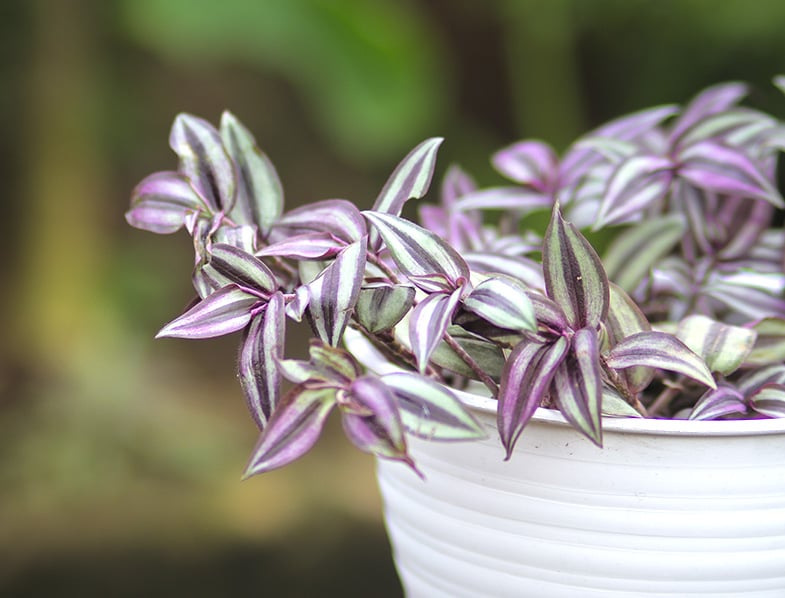
Tradescantia Fluminensis
This wandering Jew species features white flowers, and it’s a trendy indoor plant around the world. The species originates from the southeastern region of Brazil. It’s an evergreen perennial plant that flowers all-year-round and lasts for many years if the owner takes care of it correctly.
The oval-shaped foliage of the Fluminensis is green in color and has a glossy look. The leaves attach to fleshy stems, and the stem nodes quickly put roots down into the soil, allowing for the rapid spread and growth of the plant in ideal growing conditions.
When the plant flowers , it produces a set of flowers with three white petals. The flowers don’t bear any seeds, and they might also emerge in clusters. There are various sub-species of this plant as well, and some types, such as variegate, feature different leaf colors, such as yellow or cream streaks in the leaves.
The plant does best in USDA zones 9 to 12, as it loves the additional humidity in these regions as well. The wandering Jew doesn’t do well in colder climates, so stick to planting in the southern states.
The wandering Jew also prefers full sunlight during the day, and you’ll need to feed it a reasonable amount of water throughout the week. The plant doesn’t enjoy being dry for long periods.
Tradescantia Pallida
This variety originates in Mexico, and it’s the most attractive of the three Tradescantia genus. This wandering Jew produces long, pointy leaves that can reach lengths of 7-inches. The leaf will eventually turn a purple color, but the tips might remain red or green during the color transition.
There are visible segmentations on the stem of this wandering Jew, and it’s for this reason that many countries classify this plant as invasive.
The segments break easily, but they root readily, evolving into two plants with little care. Fortunately, for fans of the plant, it also makes it easy to grow the plants for cuttings as well.
Tradescantia pallida don’t like the cold, and it will die back in colder environments in the Northern states, especially if it grows outside. This wandering Jew produces small flowers that bloom in colors of pink, lavender, and white. The flowers feature three petals, and while they aren’t show-stopping, then do add a beautiful aesthetic to the plant.

- shipped in inproved box to save the plant

Last update on 2024-05-02 / Affiliate links / Images from Amazon Product Advertising API
Natural Air Cleaners
One of the reasons why the wandering Jew is such a popular house plant is its natural air-cleaning properties. The wandering Jew is an excellent “air scrubber,” and it removes bacteria and VOCs from the air inside your home, exchanging it for fresh air that enhances your home.
Some research also shows that the wandering Jew can assist in soil remediation, as well. The plant can remove heavy metals from the soil, helping restore the root health of other plants in the same flowerbed or pot.
Caring for Your Wandering Jew Plant
All varieties of the wandering Jew are easy to care for, provided that you grow them in the right climate and conditions. As long as the plant receives regular watering and pruning, it will thrive, and you’ll also manage to control the growth as well.
If you plant in a sunny spot in your home, then you can expect your tradescantia to last for many seasons. It’s also important to note that the plant might not flower it in its first season. However, by the third year, you should see plenty of flowers that emerge in the summer months.

As mentioned, the wandering Jew prefers sunny planting locations. The plant prefers later afternoon sun to morning sun, but it does well in any sunny area around the home. The more light you give the plant, the more flowers it produces in the flowering season.
If your wandering Jew does not get sufficient sunlight, you’ll notice that the color of the leaves starts to fade. Move the plant to a sunny spot, and it should recover in less than a week.
The wandering Jew enjoys a balanced moisture level in its soil . Don’t let the earth get too dry, as it might cause burning in the tips of the leaves. Likewise, the wandering Jew does not enjoy excessively wet soil either. The plant is susceptible to forming root rot if you “keep its feet wet.”
To check if it’s time to water your wandering Jew, push your finger about 1-inch into the soil. If it feels dry, then give your plant some water.
You must ensure you use a rich, loamy soil that drains well when planting your wandering Jew. When planting in a pot, make sure you add a layer of gravel at the bottom of the pot to enhance drainage. Add perlite to the soil to assist with drainage as well.
You can get away with using a standard potting mix when planting indoors , and other soil enhancements we recommend you add are the following.
- Coarse sand and perlite for drainage
- Humus or peat
- A light dusting of lime
- A few handfuls of rich organic compost
You want the soil to retain water but still allow optimal drainage.
During the growing season, fertilize your wandering Jew plant using a liquid-based fertilizer product. Make sure that you dilute the fertilizer to 50-percent strength.
Strong concentrations can result in burning in the tips of the leaves of the plant. You can also add a granular slow-release fertilizer to the soil once a year at the start of spring.
The wandering Jew grows quickly, and it might take over its pot in one or two seasons, depending on the size of the container. Therefore, you’ll need to pull up the plant and divide it from year-to-year, depending on its growth rate.
If you choose to re-pot your plant, make sure you use a pot that’s at least 50-percent larger than the old one. Line the pot with potting soil and a few handfuls of rich organic compost. Dig around the edges of the existing container to loosen the root ball. After loosening, pull the base of the plant to release it from the pot.
Move the plant to its new pot, and then fill with potting mix to cover the roots — Pat down the soil, and then water lightly.
Wandering Jew plants require regular pruning . The plant grows quickly, and if you don’t prune, then it can overtake the pot fast. Pruning also helps the stem, from getting “leggy,” meaning that the plant starts to look bare at the base. Pruning keeps the plant healthy and growing at an optimal rate.
All; you need to do is prune back any stems and pinch the stem tips. The wandering Jew will then send out two new shoots from the pinched top, helping your plant spread out into a bush-like appearance.
Propagation
The wandering Jew is easy to propagate . This plant grows quickly in a variety of conditions, which is one of the reasons why most countries list it as invasive. You can propagate your cuttings after your pruning session, without much effort.
Remove all of the leaves but the top set after pruning the stem. Place the cutting in another smaller pot with moist potting soil . Leave the container in the sun, and you should find that the cutting roots in a month.
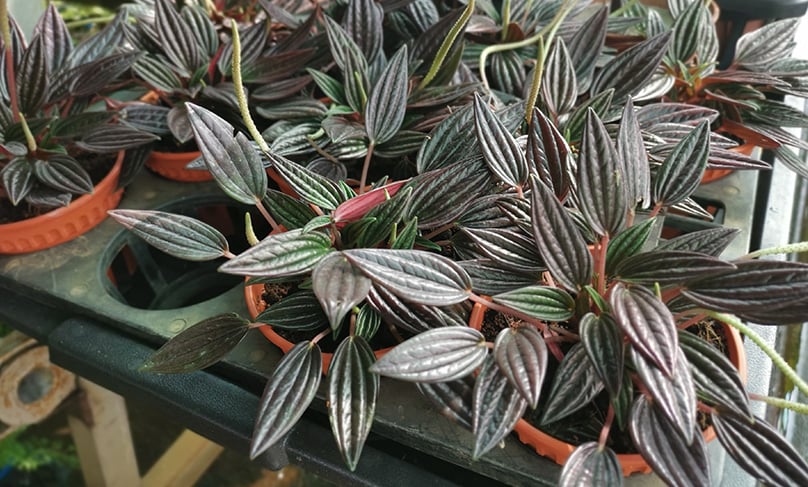
Being an indoor plant , the wandering Jew does not get much attention from pests. However, spider mites can be a problem for your plant if you don’t take care of it and watch for the presence of pests.
Spider mites are tiny spider-like bugs that form a web around the inside of the leaves of the plant. If left unmanaged and untreated, they might start to cause yellow spots in the foliage. The wandering Jew might also fail to flower in the summer months as well.
Over-watering your wandering Jew plant can result in the onset of diseases like root rot. Ensure that you have a well-draining soil mix before planting your wandering Jew. Provided that you do everything you can to ensure your soil drains well, you should never have a problem with root rot in your wandering Jew plant.
Wandering Jew Plants FAQS
What is the best way to grow a wandering jew plant.
The best way to grow a Wandering Jew plant involves placing it in a location that gets plenty of sunlight, preferably late afternoon sun. You should use well-draining, loamy soil to plant it, and ensure a balanced moisture level by watering it regularly but not excessively. The plant also appreciates humidity and occasional fertilizing with a liquid-based fertilizer diluted to 50% strength during the growing season. Pruning should be done regularly to manage its growth.
Is Wandering Jew easy to grow?
A: Yes, Wandering Jew plants are generally easy to grow. They adapt well to various conditions and are fast-growing. They can be propagated easily from cuttings and require minimal maintenance beyond regular watering, pruning, and an occasional application of fertilizer. However, they do not tolerate cold climates very well.
Does wandering Jew like full sun or shade?
Wandering Jew plants prefer locations with full sunlight. They can tolerate some shade but too much shade can cause the color of the leaves to fade. More sunlight exposure generally leads to more flowers during the flowering season.
How often do you water Wandering Jew?
Wandering Jew plants should be watered regularly to maintain a balanced moisture level in the soil. However, the soil should not be allowed to become too dry or too wet. Overwatering can lead to root rot. A good way to check if it’s time to water is to push your finger about 1-inch into the soil. If it feels dry, it’s time to water the plant.
Is Tradescantia Zebrina easy to grow?
Yes, Tradescantia Zebrina, a variety of Wandering Jew, is easy to grow. It requires similar care to other Wandering Jew varieties and is known for its adaptability and quick growth.
Does Tradescantia Zebrina need full sun?
Tradescantia Zebrina does best in a location with full sunlight. While it can tolerate some shade, insufficient sunlight can cause the leaves to lose their vibrant color. Like other Wandering Jew plants, the more light it gets, the more flowers it produces during its flowering season.

Hollie is a life-long gardener, having started helping her Dad work on their yard when she was just 5. Since then she has gone on to develop a passion for growing vegetables & fruit in her garden. She has an affinity with nature and loves to share her knowledge gained over a lifetime with readers online. Hollie has written for a number of publications and is now the resident garden blogger here at GardenBeast. Contact her at [email protected] or follow on twitter https://twitter.com/greenholliec
Pampas Grass Guide: How to Plant & Care for “Cortaderia Selloana”
Rhaphidophora tetrasperma guide: how to grow & care for “mini monstera”, corn plant guide: how to grow & care for “dracaena fragrans”.
under the photo “easy to propagate”, that is not a wandering jew-its a peperomia “rosso!”
My wandering jew plants leafs are getting dried. Why is that?
It’s not getting enough humidity
Could you elaborate on “rich organic compost”? What should it be made of, exactly? Can I use compost accelerator in the soil mix?
Worm castings are great, or worm tea, egg shell tea is another.
What month does the jew break ground to start growing?
All depends on your specific areas weather pattern and seasons.
Do NOT BUY ANY OF THIS SPECIES if you have a dog because dogs are very allergic to these plants & come out in bad rashes if they wander through them!
Leave A Reply Cancel Reply
Save my name, email, and website in this browser for the next time I comment.
Type above and press Enter to search. Press Esc to cancel.
We independently select everything we recommend. When you buy through our links, we may earn a commission.
Wandering Jew: A Magnificent Cascading Houseplant
Wandering Jew, or spiderwort plants, are popular houseplants loved for their beautiful purple and green variegated foliage, trailing vines, and ease of care.
- About this plant
- Plant information and care guide
Other names for this plant...
Spiderwort plant Inch plant Striped wandering Jew Purple wandering Jew Silver inch plant Wandering dude
About Wandering Jew
Wandering Jews are characterized by their striking purple, green, and silver tricolor leaves. They have recently acquired the alternative name of ‘wandering dude.’
Wandering Jew plants are known for their ability to trail and cascade, making them perfect for hanging baskets or as a trailing plant in a mixed container. They’re low-maintenance, tolerate low light levels, and are incredibly easy to propagate.
While wandering Jew plants are classified as succulents , they have slightly different environmental preferences than most succulents.
Botanical Name
The botanical name of the wandering Jew plant is Tradescantia zebrina. It is a member of the Commelinaceae family , which includes around 652 flowering plants in tropical and subtropical regions.
The wandering Jew plant is a herbaceous perennial, meaning it is a non-woody plant that lives for multiple growing seasons and dies back to the ground each winter when grown outside. As a houseplant, the wandering Jew will grow year-round but not produce much new growth in the colder months.
The wandering Jew plant is native to Mexico and Central America.
The wandering Jew plant is a trailing herbaceous perennial with long, slender stems. The leaves of the wandering Jew plant are typically lance-shaped and range in color from green to purple, with a silver stripe running down the center of each leaf.
The leaves are also slightly fleshy and covered in fine, soft hairs.
The plant produces small, three-petaled flowers that are usually pink or white but are not as showy as the foliage.
Types Of Wandering Jew Plants
Here are a few of the most popular varieties:
The most common wandering Jew plant is radescantia zebrina . It has green variegated leaves with a silver stripe down the center and purple undersides.
Tradescantia fluminensis has green leaves with white stripes down the center and are sometimes confused with Tradescantia zebrina.
Tradescantia pallida is also called purple heart or purple queen. It has purple leaves that turn almost black in bright light.
Tradescantia albiflora has green leaves with white or cream-colored stripes and produces small white flowers.
Tradescantia spathacea , or Moses-in-a-cradle, has long, pointed green leaves and produces small white flowers surrounded by a boat-shaped purple bract.
Tradescantia fluminensis , or “Variegata,” has striped leaves of green and cream.
Wandering Jew Styling
Here are a few ideas for styling your wandering Jew plant:
The cascading and trailing growth habit of the wandering Jew plant make it an excellent choice for a hanging basket. Choose a basket that matches your decor and hang it in a sunny location where the plant can receive indirect sunlight.
You may combine wandering Jew plants with other trailing or upright houseplants, such as spider plant , pothos, or fern , to create a mixed container display.
With some training, the wandering Jew plant can be grown up a trellis or other support to create a climbing effect. This is a great way to add vertical interest to your home decor.
Wandering Jew plants can be grown in a terrarium or other partially enclosed container, which creates a humid environment that the plant enjoys.
If you have a smaller wandering Jew plant, style it as a tabletop display by placing it in a decorative pot or container and using it as a centerpiece on a coffee table or dining table.
Wandering Jew plants thrive in bright, indirect sunlight but also tolerate some shade. Full sun scorches the plant leaves, so it is best to place it near a window that receives filtered or indirect sunlight. Provide some shade if you put it outside in the summer.
Wandering Jew plants prefer consistently moist, well-draining soil, so water the plant thoroughly when the top inch of soil feels dry. Avoid letting the soil dry out completely or become waterlogged, as this causes the plant to wilt or develop root rot.
Temperature
Wandering Jew plants like average room temperatures between 60 and 75°F (15 and 24°C) and tolerate a range of humidity levels. Avoid placing the plant in areas with temperature extremes, such as near drafty windows or heating vents.
Wandering Jew plants prefer moderate to high humidity, so keeping the soil evenly moist and occasionally misting the leaves to increase humidity levels is important. If the air in your home is particularly dry, place a small humidifier near the plant or group it with other houseplants to increase humidity levels.
Wandering Jew plants need a well-draining, peat-based soil with a pH between 5.5 and 6.5. Use a commercial potting mix or create your own by combining peat moss, perlite, and sand in equal parts.
As your wandering Jew plant grows, you must repot it into a larger container.
To prune a wandering Jew plant, use sharp, clean scissors or pruning shears to remove dead, damaged, or yellowing leaves. You can pinch back the growing tips to encourage new growth and branching and create a fuller, bushier shape.
When making your cuts, trim back to just above a node, a small swelling on the stem where new leaves and branches emerge.
Look for stems that have become leggy, stretched out, or are growing in an undesirable direction. Remove any dead, diseased, or damaged ones.
Wandering Jew plants do not require frequent fertilization but provide a balanced, water-soluble fertilizer every 2 to 4 weeks during the growing season (spring and summer). Avoid fertilizing the plant during the winter when it is not actively growing.
Height & Growth
The wandering Jew plant’s stems grow up to 2 to 3 feet (0.6 to 0.9 meters) in length. It can be a very fast grower during the growing season, so plan to prune it regularly to maintain the desired shape and size.
The wandering Jew plant (Tradescantia zebrina) is mildly toxic to humans and animals. The sap of the plant contains oxalates, which cause skin irritation and a rash in some individuals. Oxalates cause gastrointestinal upset if ingested, such as nausea, vomiting, and diarrhea. If ingested, the plant causes irritation and swelling of the mouth, lips, and throat.
Tradescantia zebrina is toxic to pets .
Common Problems
The common problems of a wandering Jew plant include yellowing leaves caused by over-watering, under-watering, or lack of humidity. The plant is also susceptible to pest infestation , like spider mites, aphids, and mealybugs.
How To Propagate Wandering Jew
The propagation of wandering Jew plants is achieved by taking a stem cutting and placing it in potting soil. Keep the soil moist and care for the new plant as you would for a mature wandering Jew plant.
The cutting will take root very quickly in soil or water. Many people take the cuttings from a pruning session and simply stick them back into the same pot to encourage fuller growth.
Frequently Asked Questions
Does wandering jew like sun or shade.
Wandering Jew plants prefer bright, indirect sunlight but also tolerate some shade. Direct sunlight scorches the leaves of the plant.
What is the most common type of Wandering Jew?
The most common type of wandering Jew is Tradescantia zebrina, also known as the inch plant, purple-heart, or purple queen. This plant has distinctive purple and silver striped leaves and trailing stems.
Is Wandering Jew poisonous to cats?
Yes, wandering Jew plants are toxic to pets. The plant contains compounds that cause irritation and digestive problems if ingested. Symptoms of wandering Jew plant toxicity in cats are vomiting, diarrhea, loss of appetite, and lethargy.
Articles about this plant
7 best hanging plants indoors, get your weekly fix of interior design inspiration.
Delivered to your inbox every Saturday morning

Setcreasea Plant Growing & Care Guide for Gardeners
Article by Dean Ravenscroft, Ph.D. - Updated 27th Oct 2023
In this Gardener's HQ guide, we'll explore cultivating Setcreasea plants in your garden, indoor spaces, and other settings.
- Plant Characteristics: Setcreasea boasts striking purple foliage that can instantly elevate garden aesthetics. Their vibrant leaves add a pop of color, making them a favorite among garden enthusiasts.
- Ideal Growing Conditions: This plant thrives in well-drained soil and can tolerate direct sunlight. However, a bit of shade during the hottest hours is more than beneficial.
- General Care: Plants are drought-tolerant and require minimal watering. Indeed, over-watering can hinder its growth, so ensure the soil is dry before watering.
- Tips for New Gardeners: Purple Heart is an excellent choice for those starting their gardening journey. It is resilient and adapts well, but protect it from frost during the colder months.
Purple Heart, Wandering Jew, & Spiderwort: Cultivation & Garden Use
Setcreasea are trailing half hardy perennials.
They carry attractive green or purple foliage. Plants bloom from spring to autumn.
The flowers have three petals, and are usually purple or white.

Elevate your gardening game today by securing your Reusable Seed Starter Tray Kit. Get this must-have for any gardening enthusiast on Amazon and give your seedlings the head start they deserve. Embark on your journey to a bountiful harvest with confidence.
Boost your gardening with the CHRYZTAL Gardening Tool Set. Get this essential kit on Amazon for effortless gardening. A good set of tools is key to a thriving garden; make every cut count. Cultivate with ease and watch your garden flourish.
Setcreasea Growing and Care Guide
- Common Names: Setcretia, Wandering Jew, Spiderwort, Purple heart.
- Syn.: Tradescantia.
- Life Cycle: Half-hardy perennial. Often grown as an annual or as a houseplant.
- Height: 16 to 20 inches (50—75 cm).
- Native: Central and North America.
- Growing Region: Zones 9 to 10.
- Flowers: Spring to autumn, dependent on species and location.
- Flower Details: White, pink, purple. Small. Three petals.
- Foliage: Evergreen. Purple or green with red or purple fringes. Oblong, elongated and pointed. Fleshy.
- Sow Outside: Flowers are often sterile so seed can be difficult to come by; very easy to grow from cuttings. Sowing : Cover seed. Autumn, using fresh seed. Germination time: four to six weeks at a temperature of ~70°F (21°C). Space at 12 to 18 inches (30—45 cm).
- Sow Inside: No.
- Requirements and care: Full sunlight (for best leaf color) or partial shade. Good drainage. Coarse soil. Plants are drought tolerant and low maintenance. Will enjoy a little water during prolonged dry spells. Cut back plants to maintain appearance. Container grown plants should be brought indoors in the autumn before temperatures drop below 50°F (10°C), as they are very susceptible to frost. Propagate: from cuttings.
- Family: Commelinaceae.
- Closely Related Species: Dayflower, Spiderwort.
- Miscellaneous: Synonymous with the Tradescantia genus. E.g., the commonly grown Setcreasea purpurea is also known as Tradescantia pallida . Scrambling plant great for use as ground-cover in warmer areas. Makes a great houseplant as its leaves filter out volatile compounds and improves air-quality.
How to Grow Setcreasea
It is best to grow Setcreasea from cuttings. If you plan to grow from seed then it is best to start off outdoors. Sow the seed in the autumn using fresh seed, lightly cover once sown.
The plants should be grown about 30 to 45 cm (12 to 18 inches) apart, and planted in a sunny area of the garden that has a dry course soil.
Although not recommended, It is possible to start off indoors, it will take about a month and a half for Setcreasea to germinate at 20 degrees centigrade (68°F). Transplant the seedlings outdoor in mid-spring.
Caring for Setcreasea
It is easy to look after Setcreasea plants, they are untidy so cut back sprawling plants. Water occasionally, once the soil has become bone dry.
If you require more plants then it is best to propagate them from cuttings.
Common Questions
How many members does the setcreasea genus have.
The Setcreasea genus, also commonly known as Tradescantia, consists of a few species.
Do members of Setcreasea make a good garden or landscaping plant?
Yes, Setcreasea is popular for its colorful foliage and low-maintenance needs, making it an attractive addition to gardens and landscapes.
Which Setcreasea species are most frequently grown by gardeners?
The most commonly grown species is Setcreasea pallida , also known as Purple Heart or Purple Queen.
Are members of the Setcreasea plant genus fragrant?
Setcreasea plants are not typically known for their fragrance but for their vibrant and attractive foliage.
What is the perfect location to grow Setcreasea ?
Setcreasea prefers a sunny to partially shaded location with well-drained soil. They are great for containers or as ground cover.

Is Setcreasea invasive in the USA, if so in which states?
At the moment, Setcreasea is not officially listed as invasive in the USA. Always refer to local guidelines for the most accurate information.
How do I remove Setcreasea plants from my garden?
To remove Setcreasea , uproot the plants ensuring to remove the entire root system to prevent regrowth.
The Setcreasea genus, often referred to as purple heart or wandering Jew, is a group of perennial plants native to Mexico. They are prized for their striking purple foliage and pink flowers, and are often used as ground cover or in hanging baskets.
To grow Setcreasea , plant cuttings in the spring in a location with full sun to partial shade. They prefer well-drained soil and require moderate to high watering. Although they are somewhat drought-tolerant, they perform best with regular watering and occasional feeding with a balanced fertilizer.
I hope that you enjoyed this guide on how to grow Setcreasea plants. You may also enjoy the following Gardener's HQ growing guides: How to grow Gaura and Tradescantia plants .
Elevate Your Gardening Game
Weekly Growing & Care Guides for Your Inbox!
Find the insights on this site valuable? Then you're going to love my book: 'The Gardener's HQ Plant Growing Guide'.

Upon purchase, receive the eBook in PDF, MOBI (for Kindle), and ePub (most e-readers and iPad) formats. Also available from Amazon USA , Amazon UK , and iBooks .

Genus Index S
- Salpiglossis
- Schizanthus
- Schizostylis
- Sempervivum
- Sisyrinchium
- Sphaeralcea
- More Plants Beginning with 'S'.
Gardener's HQ © 2005-2024 by Dean Ravenscroft | Privacy Policy

Wandering Jew Plant (Tradescantia zebrina): Types, How to Grow and Care
Sharing is caring!
Plants with trailing and creeping habits are some of the best plants to keep. They are fast-growing and make thick carpet of groundcovers for gardens in no time and they also create striking hanging indoor plants.
Among the all-time best trailers to grow is the wandering jew. Easy to maintain and drapes beautifully, this colored plant will make any space more inviting and interesting.
Medicinal Properties
Propagation and maintenance, what is a wandering jew plant.
Tradescantia is one of the 37 genera under the plant family Commelinaceae (1). Some of its 75 species are commonly called ‘wandering jew’ (also known as inch plant), a name they adapted due to their long lifespan like the Jewish character from a Christian folklore.
Another name for this group of herbaceous perennial plants is ‘spiderwort’ after the spiderweb-like sap they produce when the stem breaks. They are native to Canada, Mexico, and Argentina and have been naturalized in other parts of the world (2).
The most common tradescantia grown ornamentally is the T. zebrina also previously called Zebrina pendula . It has long fleshy stems where the wandering jew plant leaves and roots appear. The lance-like leaves are a mixture of green and purple with silver stripes on the upper side and deep purple under (3). The plant grows close to the ground and can only reach 20 to 30 cm high.
Does Tradescantia Zebrina Flower?
The wandering jew is considered an ornamental plant primarily because of its showy colorful foliage but the plant does produce pink flowers.
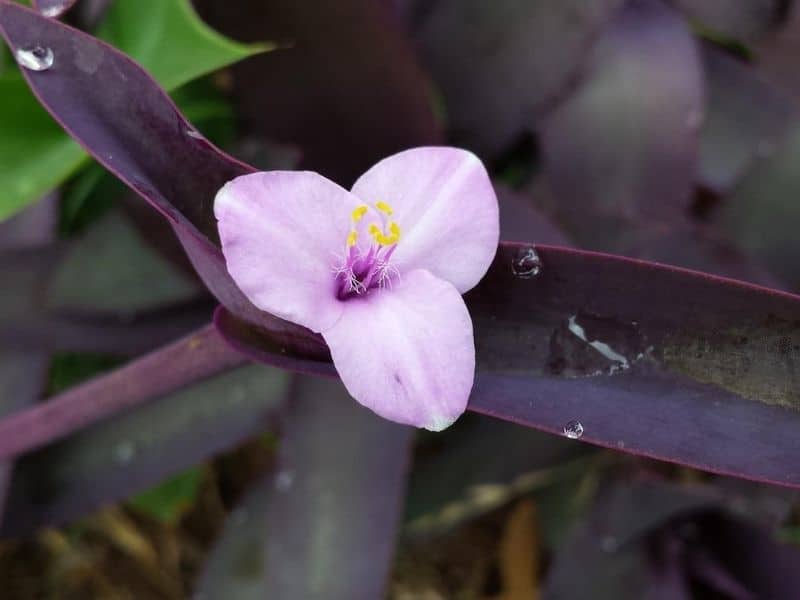
Small three-petaled pinkish purple flowers appear sporadically throughout the year (4). The resulting fruit is a capsule containing tiny brown seeds.
Is it Toxic to Pets?
Spiderworts are normally harmless plants but they contain toxic properties that may cause mild gastric problems and dermatitis to pets. Although they don’t lead to anything serious, it will be safe to keep the plants out of reach of pets and to keep the hands protected when dealing with the sap of the plant.
Because of the plant’s hardiness and adaptability to different environments, the wandering jew establishes well, in fact so well that it can be considered an invasive species. In countries like Australia, the plant has the capacity to invade natural vegetation. Although growing them is not prohibited, everyone is obliged to keep the plant’s growth under control (5).
Studies showed that Tradescantia has significant effects as an anticancer, antioxidant, and antibacterial medicinal plant. In traditional Chinese medicine, the wandering jew plant is highly valued as treatment for kidney failure.
The extract from the whole plant is cooked with dates, ginger, and water and consumed by patients. The plant is also known to treat high blood pressure, cough, urinary tract infection and tuberculosis (1).
How to Grow and Care for a Tradescantia
Here’s how to care for a wandering jew plant, one of the easy house plants to own.
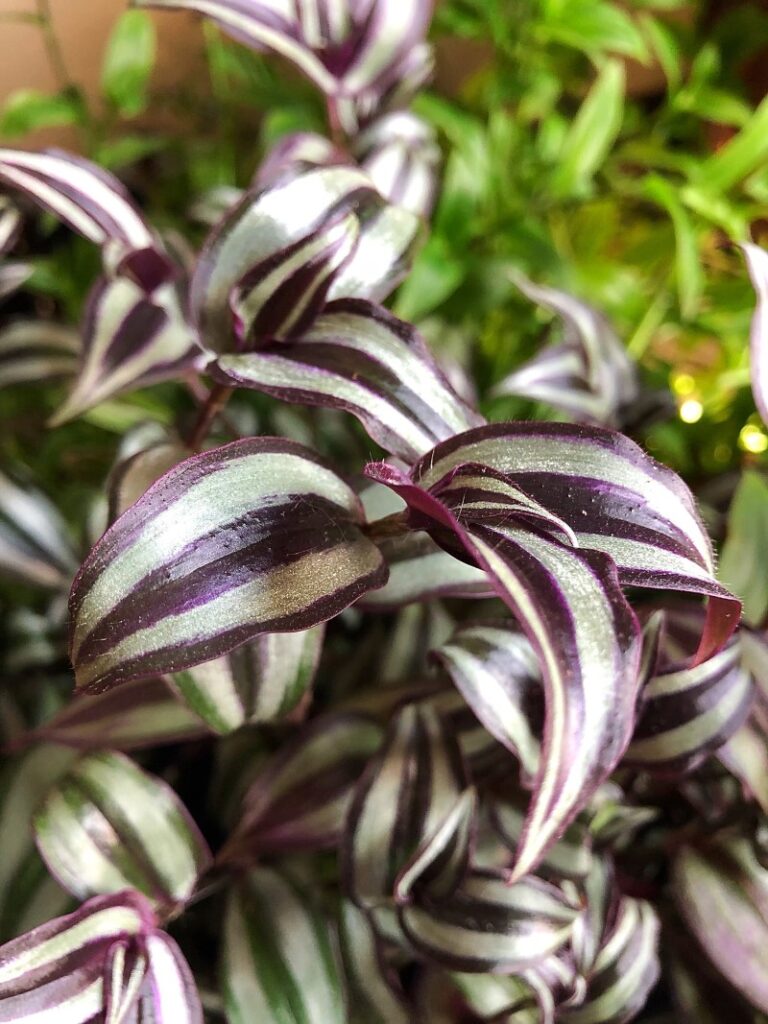
Light and Water
In the wild, the wandering jew plant thrives without assistance but under the right conditions. It likes filtered sun so indoor fluorescent light is enough. Placing them by the window and turning the plant every two weeks will keep the leaves colorful and the growth even on all sides (3).
The plant spreads easily in damp areas that’s why it naturally grows along riverbanks and roadsides. When potted, the soil should be kept moist but well-drained. Saturated soil often causes root rot.
Fertilize your Tradescantia plant once a month during the growing season (spring and summer) with a balanced, water-soluble fertilizer diluted to half strength. Avoid fertilizing in fall and winter when the plant is dormant. Over-fertilizing can lead to fertilizer burn and damage the plant, so follow the instructions on the fertilizer package carefully.
Temperature and Humidity
Spiderworts like it warm but there should be enough air circulation or else the leaves will sag. During the heat of the summer, taking the plant outside under shade will provide the necessary cool to the plant.
Mist the hanging plant early in the morning and late in the afternoon. If the plant is on a table, place a glass of water beneath the leaves or put the pot on a wet pebble tray. This will humidify the immediate vicinity of the plant aiding in its photosynthesis and transpiration processes.
Pests and Diseases
The most common living enemies of the wandering jew are aphids, mealybugs, scale, white flies, and spider mites. Manual removal at the onset of infestation is effective but they should be closely monitored as serious attack may lead to the plant’s death. If left unnoticed and the infestation has become severe, get rid of the plant by burning to avoid contamination.
Since the creeping inch plant is mainly soft almost like a succulent, soggy soil and too wet conditions lead to root and stem rot (4). As long as the plant is receiving just enough moisture, this disease will be avoided.
Propagating wandering jew plants is very easy. They can grow from seeds but will take years to establish so the more convenient stem cutting is best. The trailing or creeping stems form nodules where the roots will eventually grow as it comes in contact with the potting soil (2). When the hanging plant has longer trails than intended, it can be trimmed and the resulting stem cuttings can be rooted to form new plants.
There will be times that the potted wandering jew will become leggy, especially if it’s been receiving more shade. To promote a bushier growth pinch back by literally pinching the tip of the plant where the new growth occurs (4). This practice allows the formation of lateral stems.
In two or three years, these hardy plants may become pot bound, with the roots taking up most of the space in the pot. Repot in a larger container with a good mixture of soil, coarse sand, and compost to replenish the nutrients and provide room for the roots to breathe. Additionally, fertilize once every two months by foliar application just to improve plant vigor.
Common Varieties of Wandering Jew
The oldest and most common indoor wandering jew, this species has leaves alternating, often overlapping when young, purple leaves with silvery green thick stripes and solid purple underside. The stem is also a mixture of purple and green.
T. blossfeldiana
The leaves of this species are quite thicker, glossy, and covered in miniscule hairs called trichomes. The three-petalled flower is an ombre of white and pinkish purple with yellow anthers.
T. fluminensis ‘Tricolor’
This attractive variety showcases leaves with white, lilac, and green variegation. It appears smaller than the common wandering jew but bushier in form.
T. sillamontana
This whimsical species looks frosted with its silvery trichomes covering the entire plant. The green leaves are still alternately arranged but more compact which make a potted plant look more bushy than trailing. The light color of the leaves provide a complementing backdrop to the bright purple flowers.
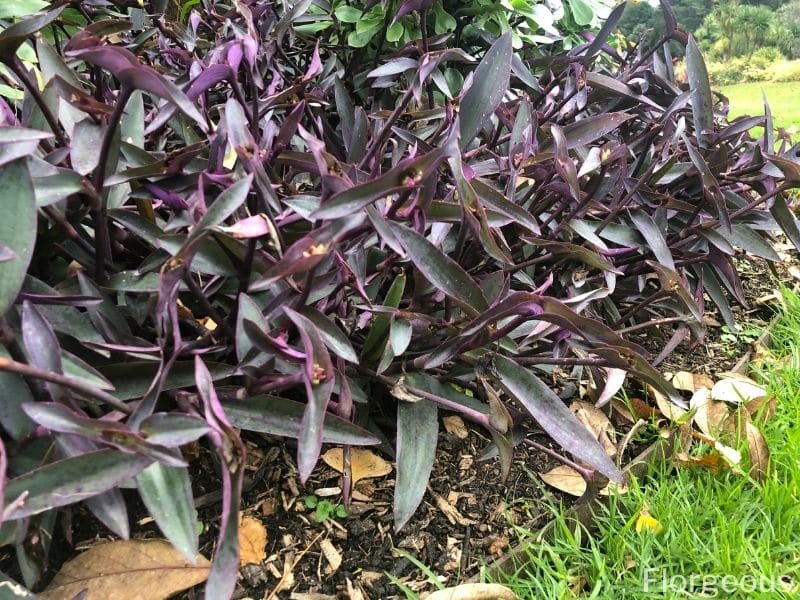
The leaves and stems of this species are in striking deep purple color hence the common name ‘ purple heart ’. Under shaded, they turn a hint of dull green. The leaves are also longer and have wider space in between.
Does Wandering Jew plant need full sun?
Wandering Jew plants (Tradescantia zebrina) prefer bright indirect light but can tolerate some direct sun, especially in the morning or late afternoon. However, prolonged exposure to intense sunlight may cause their dark green leaves to scorch.
How do you care for a wandering Jew plant indoors?
To care for a Wandering Jew plant indoors, place it in a location with bright, indirect sunlight, such as near a window. Water it when the top inch of soil feels dry, typically every 1-2 weeks, and provide well-draining soil. Additionally, mist the plant occasionally to increase humidity and remove dust from the leaves.
How do I make my Wandering Jew fuller?
To make your Wandering Jew plant fuller, prune it regularly to encourage branching and bushier growth. Pinch off the tips of the stems or trim back leggy growth to promote new growth and create a more compact appearance. You can also propagate wandering jew cuttings to create new plants and fill out the pot.
How long do Wandering Jew plants live?
Wandering Jew plants are generally long-lived when provided with proper care. With the right growing conditions indoors, they can thrive for several years, often becoming fuller and more lush over time with regular pruning and maintenance.
Reference List
(1) Dash, G., et. al. Tradescantia zebrina: A Promising Medicinal Plant. 2017. IAJPS, 4 (10). P. 3498-3502 .
(2) Arakelyan, H. Tradescantia zebrina- Mother Nature Healing. 2019. Researchgate.
(3) Vermeulen, N. Encyclopedia of House Plants. Taylor and Francis. 1999. P. 320.
(4) North Carolina State Extension. Tradescantia zebrina. NC State University. 2018. https://plants.ces.ncsu.edu/plants/tradescantia-zebrina/ . Accessed on 12 August 2020.
(5) The State of Queensland. IPA-Zebrina. Department of Agriculture and Fisheries. 2020. https://www.daf.qld.gov.au/__data/assets/pdf_file/0020/51284/IPA-Zebrina-PP102.pdf . Accesed on 12 August 2020.
Photo by Wirestock/depositphotos
Have you seen these?

Overwatered Lantana: Identifying, Fixing, and Preventing Water Damage

Overwatered Petunias: Signs, Damages, and Recovery Steps

Overwatered Pumpkin Plant: A Comprehensive Guide to Rescue and Prevention

Overwatered ZZ Plant: Rescue, Recovery and Prevention Strategies

Overwatered Dogwood Tree: Causes, Symptoms, and Revival Techniques

Overwatered Lavender: A Comprehensive Guide to Prevention and Recovery
About the author.

How to Grow Wandering Jew — Tradescantia
Sharing is caring!
Tradescantia is a genus of creeping, trailing, or tuft-forming tropical foliage plants. One species, Tradescantia fluminensis –commonly called wandering Jew–has handsome iridescent green and purple striped leaves. Another, T. andersoniana –known as spiderwort–looks like a small corn plant with numerous iris-like blossoms.
Tradescantias are evergreen perennials in warm-winter regions, mostly short-lived. They are suitable for herbaceous borders or can be grown as ground covers. Tradescantia will cascade from hanging baskets and they are often grown as houseplants.
Tradescantia is very easy to grow from cuttings. They need afternoon shade in hot summer regions. Pinching back growing tips will encourage bushiness.
Tradescantia is a genus of 65 species of creeping and trailing perennials native North, Central, and South America.
Table of Contents
Get to know Tradescantia
- Plant type: Tropical evergreen trailing perennial
- Growing Zones and range: Zones 10-11
- Hardiness: Tender
- Optimal growing temperature: day 70°F (21°), night 50° to 55°F (10°-21°C)
- Height and width: Trailing stems to 12 inches (30cm) long
- Foliage: Green 2 to 3 inches (5-7cm) leaves colored or striped with iridescent red, purple, yellow, pink, and/or silver.
- Flowers: Small saucer-shaped flowers with 3 petals
- Flower colors: Purple, blue, pink, lilac, white
- Bloom time: Spring and summer
- Uses: Tropical garden, hanging baskets, houseplant
- Common name: Wandering Jew, inch plant
- Botanical name: Tradescantia
- Family: Commelinaceae
- Origin: North, Central and South America
Where to plant Tradescantia
- Light outdoors: Grow Tradescantia in full sun or partial shade.
- Light indoors: Grow Tradescantia in bright light, even some direct light.
- Soil outdoors: Plant in moist, humus-rich fertile soil.
- Soil indoors: Grow Tradescantia in all-purpose potting mix.
Tradescantia uses and companions
- Tradescantia can be massed in informal, cottage, or naturalistic gardens.
- Hardy species such as T. andersoniana are suitable for a mixed border.
- Tradescantia can be grown in a hanging basket or as a houseplant.
- Good garden companions for Tradescantia include Chelone, Digitalis, Filipendula, Iris, Lythrum, Trollius.

How to water and feed Tradescantia
- Keep the soil just moist; allow the soil surface to dry a bit between waterings. Keep Tradescantia drier in winter.
- Fertilize Tradescantia with dilute fertilizer twice a month.
Tradescantia care
- Pinch back Tradescantia new growth often to keep the plant full.
- Setting Tradescantia on a tray with pebbles and water will maintain humidity.
- If leaves fade, move the plant into brighter light.
- If older plants get scraggly, take cuttings to start new plants.
Growing Tradescantia as a houseplant
- Tradescantia fluminensis , wandering Jew, and T. sillamontana , white velvet plant, are often grown as houseplants.
- Tradescantia needs bright light, an average room temperature, and medium to high humidity.
- The soil should be allowed to dry between watrerings.
- Fertilizer can be applied regularly in spring and summer.
- Dried leaves should be removed and the stems should be pinched back frequently to encourage full, bushy growth.
Tradescantia pests and diseases
- Tradescantia is susceptible to damage by mealybugs, scale insects, spider mites, and whiteflies.
Tradescantia propagation
- Tradescantia stem cuttings root easily.
- Tradescantia seeds will germinat in 10 to 40 days at 70°F (20°C).
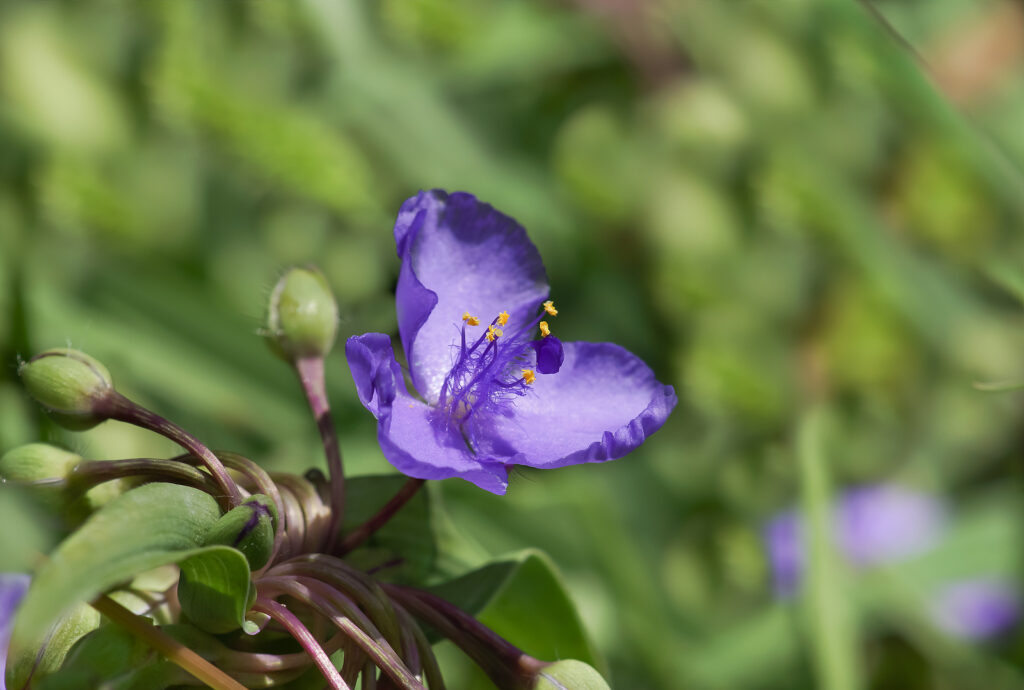
Tradescantia varieties to grow
- Tradescanti albiflora ‘Albovittata’. Ovate, blue-green leaves striped with white; white flowers.
- T. albiflora ‘ Laekenensis’. Pale green leaes with white and purple stripes.
- T. andersoniana , spoiderwort. Grows to 2 feet tall; stems look like small corn plants; clusters of flower buds appear atop each stem. Hardy to -20°F (-29°C).
- T. blossfeldiana . Dark green, oval leavs with hairy, reddish purple undersides; pink to purple flowers with white centers.
- T. blossfeldiana ‘Variegata’. Soilid green, solid white, and green and white striped leaves on the same plant.
- T. fluminensis , wandering Jew. Grows to 24 inches in length; upper leaf surfaces are blue-green, undersides are deep purple; flowers are white; cultivar ‘Variegata’ has leaves with white lengthwise stripes.
- T. sillamontana , white velvet plant. Wavy-deged green leaves covered with white hairs; stems and leaf undersides are purple; rosy purple flowers, appear summer through fall.
- T. spathacea , Moses-in-the-cradle. Rosettes of semi-erect, lance-shaped leaves, dark green and deep purple beneath; white flowers.
- T. virginiana , Virginiat spiderwort. Perennial native to Eastern United States, Zones 4-9; grows 2 to 3 feet tall; bears 3 flared petals in blue, purple, magenta, or white.
- T. zebrina (formerly Zebrina pendula ), wandering Jew. Trailing ovate bluisg hreen leaves with 2 longitudinal stripes, silver-green above rich purple beneath; purple-pink to purple flowers. Cultivars include: ‘Purpusii’ has dark, greenish-red leaves; ‘Quicksilver’ is green with silvery-white stripes; ‘Tricolor’ is white and pink striped.
Written by Stephen Albert
Stephen Albert is a horticulturist, master gardener, and certified nurseryman who has taught at the University of California for more than 25 years. He holds graduate degrees from the University of California and the University of Iowa. His books include Vegetable Garden Grower’s Guide, Vegetable Garden Almanac & Planner, Tomato Grower’s Answer Book, and Kitchen Garden Grower’s Guide. His Vegetable Garden Grower’s Masterclass is available online. Harvesttotable.com has more than 10 million visitors each year.

How To Grow Tomatoes

How To Grow Peppers

How To Grow Broccoli

How To Grow Carrots

How To Grow Beans

How To Grow Corn

How To Grow Peas

How To Grow Lettuce

How To Grow Cucumbers

How To Grow Zucchini and Summer Squash

How To Grow Onions

How To Grow Potatoes

How to Grow Bugbane — Cimicifuga
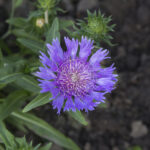
How to Grow Stokes’ Aster — Stokesia
© 2016-2024 · Harvest To Table
Get the best gardening tips straight into your inbox!
Email Address:
Don't worry, we don't spam
How to Grow and Care for a Wandering Dude Plant
Here’s how to care for this pretty trailing plant.
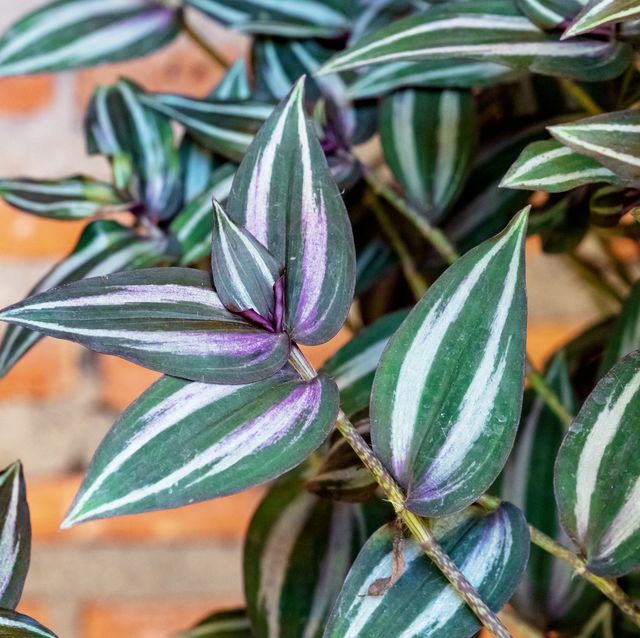
Country Living editors select each product featured. If you buy from a link, we may earn a commission. Why Trust Us?
With its long dangling stems, this plant tends to “wander” all over the place. Today, the plant often is called by its botanical name, Tradescantia, with “zebrina” referring to its silver striping.
It’s sometimes also called silver inch plant, but it can be confused with another plant, commonly called inch plant, Tradescantia fluminensis , which has solid green foliage.
Other varieties of wandering dude have become widely available in recent years, including the very popular nanouk type, which has foliage with pretty pinkish stripes and magenta undersides.
Native to Mexico, Belize, Guatemala and Honduras, the wandering dude usually is grown as a houseplant, but in USDA Hardiness zones 9 to 11 , it can be grown as a low-growing ground cover, too. ( Find your zone here .)
Read more: 15 Common Houseplants to Grow and Brighten Up Your Home
Ahead, learn everything you need to know about how to care for a wandering dude plant:
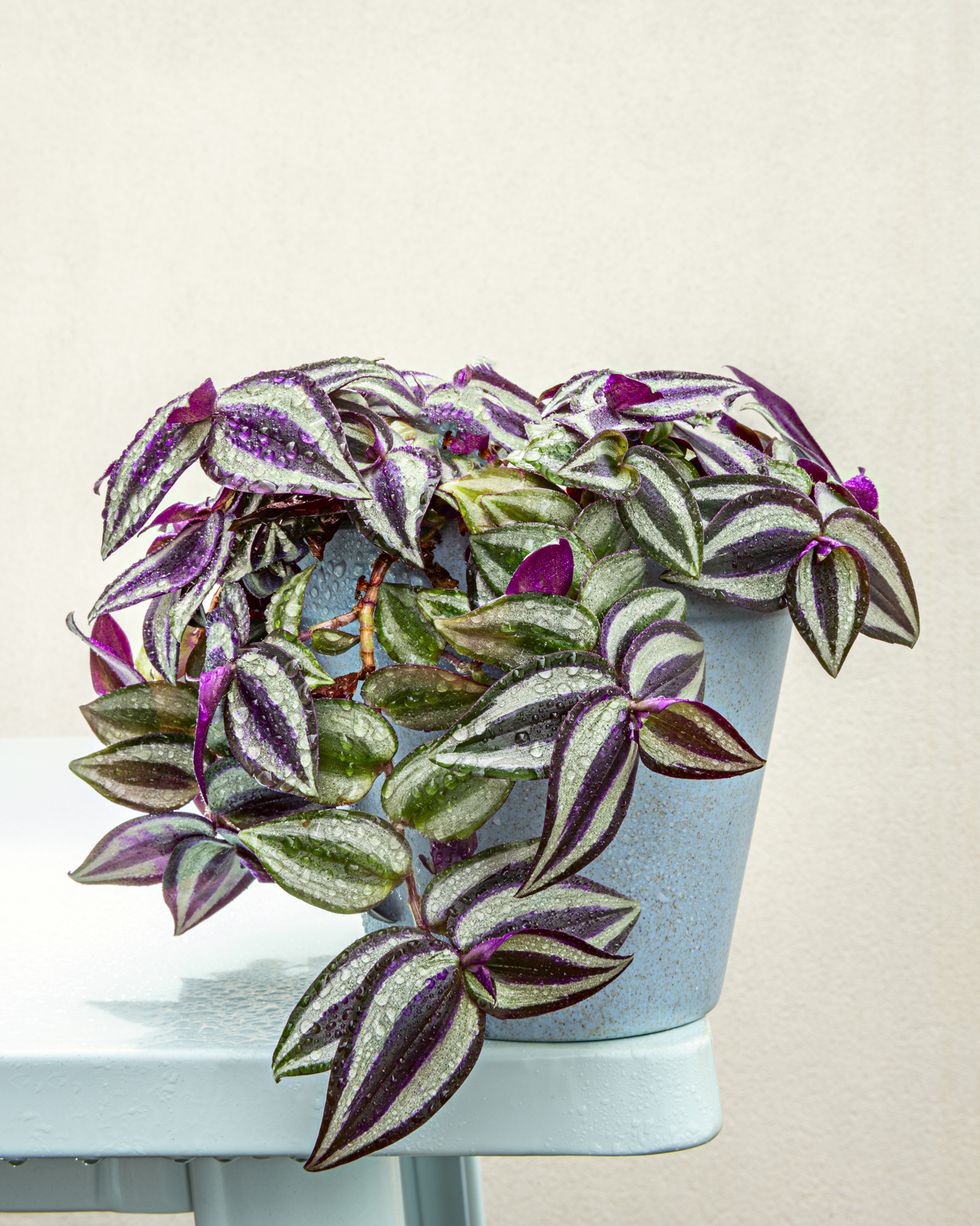
Wandering Dude Basic Info:
- Common Name: Wandering dude
- Botanical Name: Tradescantia zebrina
- Plant Family: Commelinaceae
- Type of Plant: Perennial, grown as houseplant
- Native Origin: Mexico, Belize, Guatemala, Honduras
- Sun Exposure: Full sun to part shade
- Mature Size: 6 inches tall by 1 foot wide
- Toxic to pets: Yes
Why Trust Us
I'm a garden writer with more than 15 years of experience growing houseplants, edibles, and landscape plantings. I also regularly trial new plant cultivars for performance and reliability, and test garden products to evaluate practicality and durability.
How Do You Care For a Wandering Dude Plant?
Give wandering dude bright, indirect light. If it doesn’t get sufficient light, this plant tends to get gangly and unattractive. Its purple coloring also may fade in low light, which means you should move it to a more brightly-lit room or use a grow light.
If your wandering dude is starting to get scraggly, simply snip off a few inches from the end of each stem to help stimulate the plant to push new, bushy growth. You can use plant snips or your fingers. You may need to pinch back frequently because wandering dude is a fast grower.
How Do You Water a Wandering Dude Plant?
You should water only when the plant feels mostly dry. Poke your finger in the soil before watering; if soil clings to your finger, wait a few more days and recheck.
If you let it get too soggy, that’s a sure way for it to get mushy and die. Like most houseplants, it’s better to err on the side of too dry, rather than too wet.
If you like, you can feed this plant with any general-purpose houseplant fertilizer, but it’s not entirely necessary.
Miracle-Gro Miracle-Gro Water Soluble All Purpose Plant Food, 3 lb
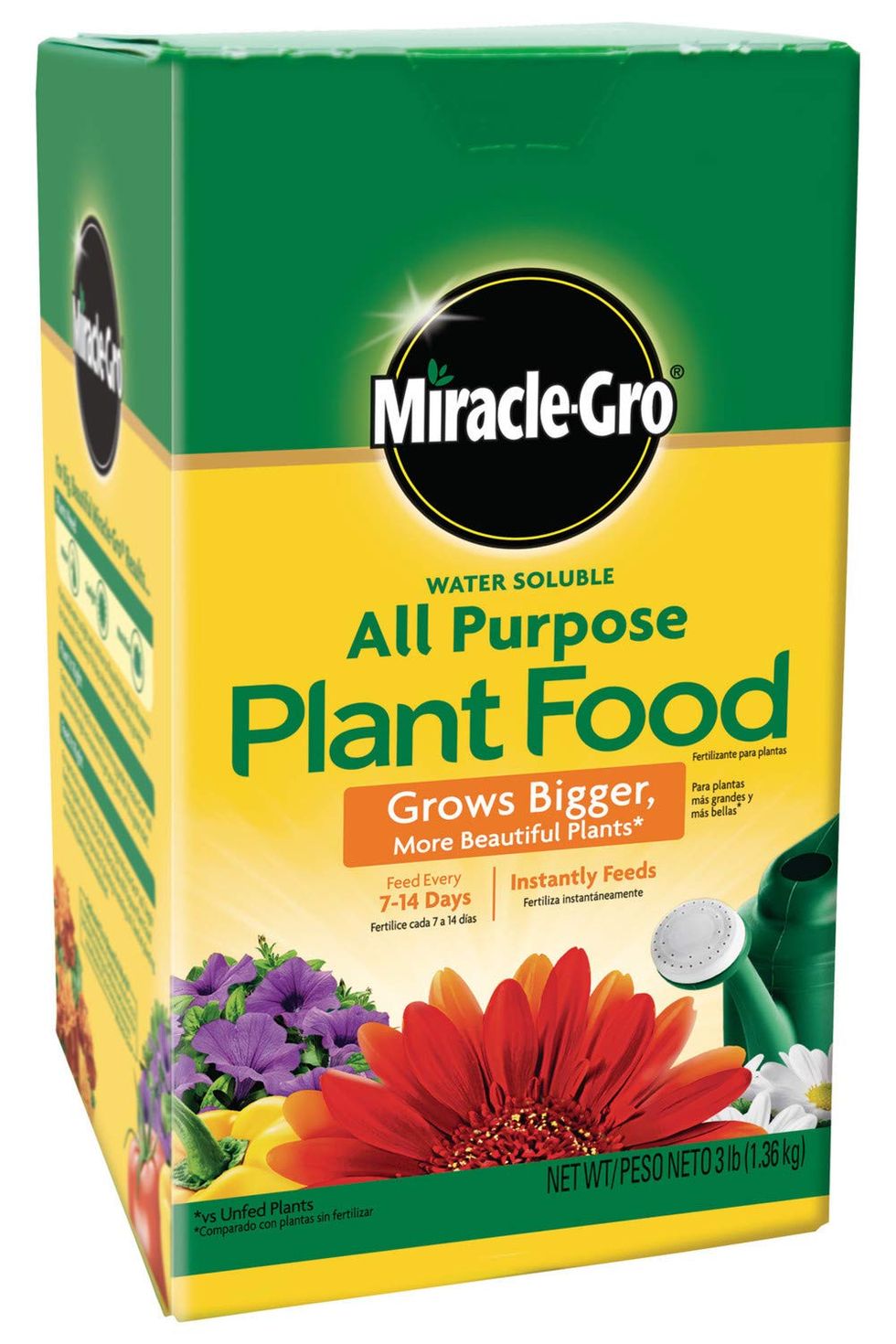
Can You Grow Wandering Dude Plant Outdoors?
Yes, it makes a great trailing plant spilling out of containers! Pair it with tall plants such as hibiscus, canna, elephant ears, or other tall, upright tropicals. If it starts to get leggy, just trim it back. Outdoors, it does best in full sun (northern climates) to part shade (southern climates). It may develop tiny pinkish flowers outdoors, though it rarely flowers indoors.
How Do You Propagate a Wandering Dude Plant?
Like pothos , this is a great plant to propagate to share with friends or to make new plants for yourself. Simply take a cutting, say, if it’s getting too long, then place it in a glass of water to root. Keep it in a bright spot in your home (not direct sunlight), and watch for roots to develop within about two weeks. Then plant in regular potting soil, and keep the soil lightly moist while it settles in.
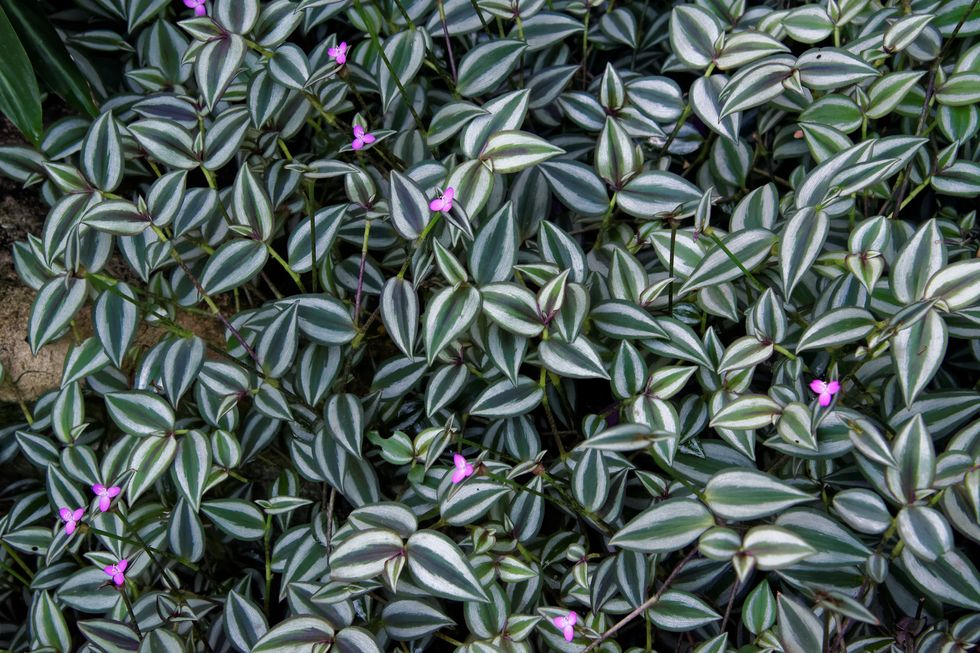
Is Wandering Dude Toxic to Pets?
According to the ASPCA , this plant is toxic to pets and may cause dermatitis, or irritation of the lips and mouth. But remember that any plant may cause vomiting or GI distress if eaten in large enough quantities, so keep this away from pets who are nibblers. Finally, call your vet ASAP if you suspect your pet has ingested it, even if you’re not sure. It’s always better to be safe than sorry!
In addition, the plant sap also may cause skin irritation in some people. Wear gloves when handling cuttings if you tend to have sensitive skin.
Read more: 28 Pet- Friendly Houseplants You Can Grow Without Worry
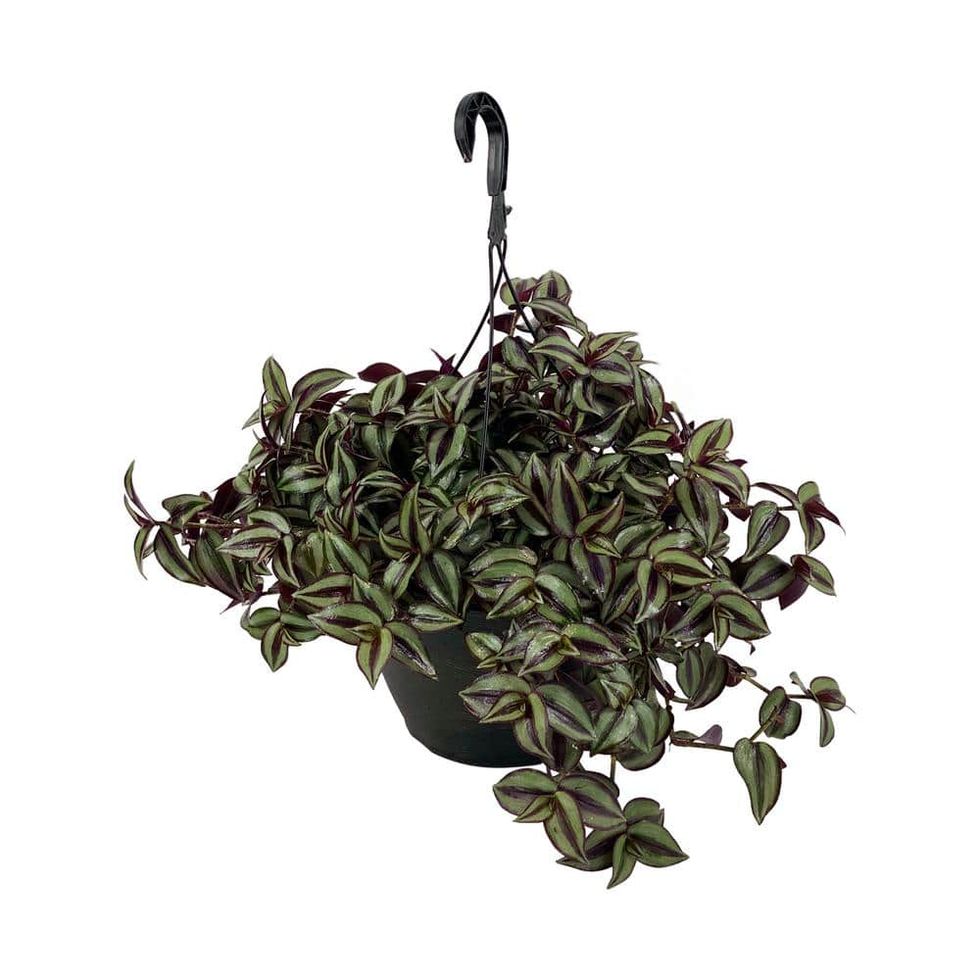
Vigoro Tradescantia in 11-inch Hanging Basket
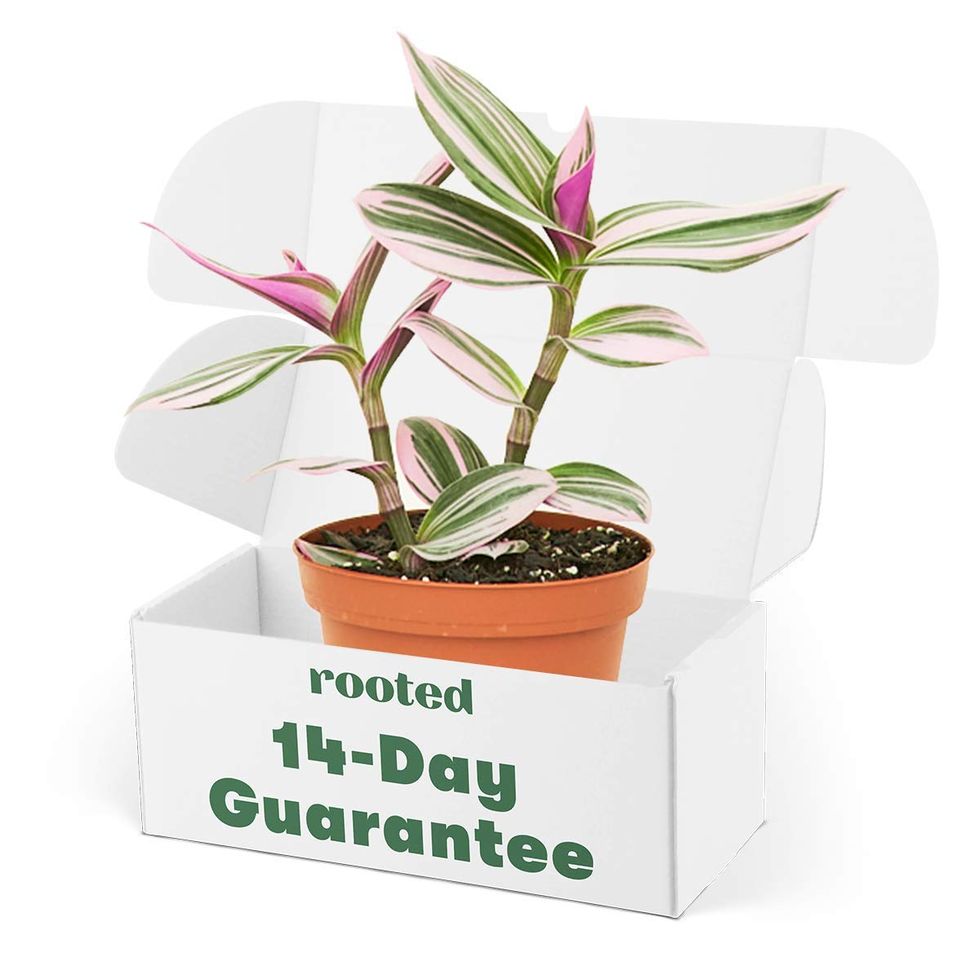
Rooted Tradescantia Nanouk, 4-inch pot
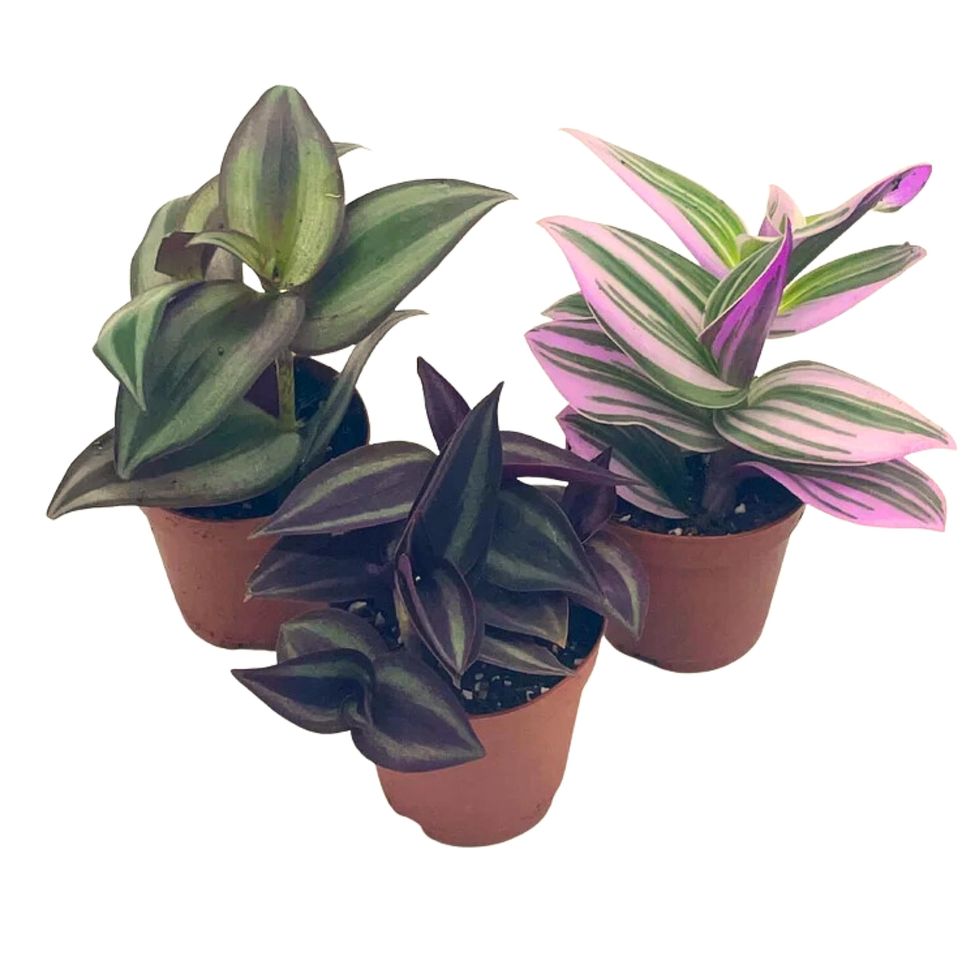
BubbleBlooms Wandering Dude Assortment
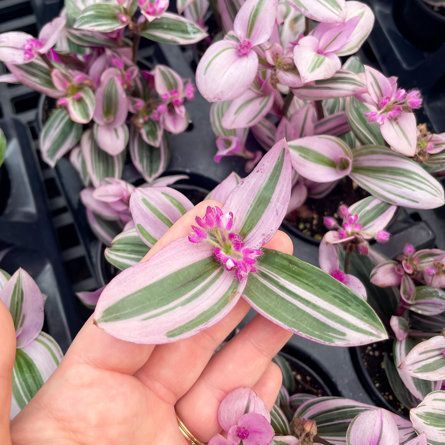
Wayfair Tradescantia Nanouk, 4-inch pot
Arricca Elin SanSone has written about health and lifestyle topics for Prevention, Country Living, Woman's Day, and more. She’s passionate about gardening, baking, reading, and spending time with the people and dogs she loves.

.css-1shyvki:before{background-repeat:no-repeat;-webkit-background-size:contain;background-size:contain;content:'';height:0.819rem;margin-bottom:0;margin-right:-0.9375rem;width:3.125rem;}.loaded .css-1shyvki:before{background-image:url('/_assets/design-tokens/countryliving/static/images/arrow.svg');}@media(max-width: 48rem){.css-1shyvki:before{display:none;}}@media(min-width: 40.625rem){.css-1shyvki:before{display:inline-block;}} Gardening Encyclopedia .css-unxkmx:before{background-repeat:no-repeat;-webkit-background-size:contain;background-size:contain;content:'';height:0.819rem;margin:0.7rem auto 0.9375rem;width:3.125rem;}.loaded .css-unxkmx:before{background-image:url('/_assets/design-tokens/countryliving/static/images/arrow.svg');}@media(max-width: 48rem){.css-unxkmx:before{display:block;}}@media(min-width: 40.625rem){.css-unxkmx:before{display:none;}}

How to Attract Mason Bees to Your Garden—and Why

17 Best Cottage Garden Ideas We Love

7 Tomato Plant Pests and How to Get Rid of Them

22 Best Hanging Plants for Every Space
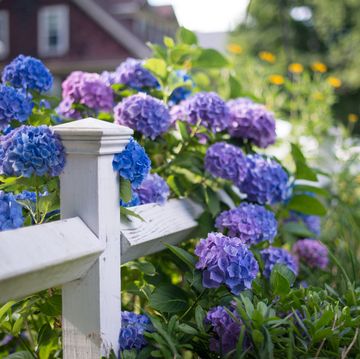
Grow Hydrangeas Like a Master Gardener!

21 Indoor Plants That Are Easy to Grow
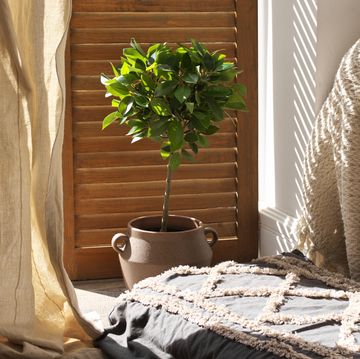
Buying a Ficus Tree? Here's What to Know
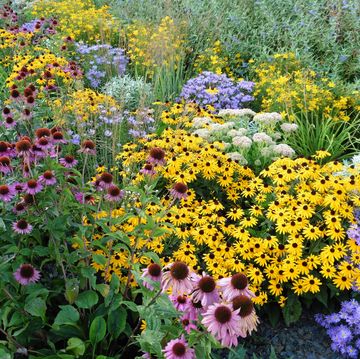
26 Full-Sun Perennials for Your Garden

Got Spider Mites? Here's How to Get Rid of Them
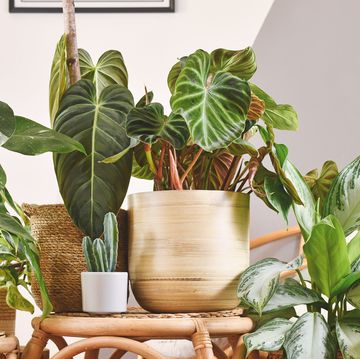
12 Big Leaf Houseplants You Need ASAP
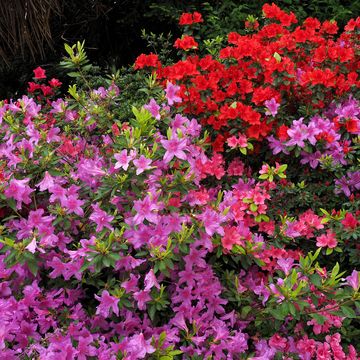
How to Grow Beautiful Azaleas
- Growing Houseplants
- Indoor Garden Ideas
- Cactus & Succulents
- Houseplants Care
- Flowers & Blooms
- Gardening Guide
- Plant Care and Tips
- Beans/Fruit Vegetables
- Companion Planting
- Culinary Herbs
- Flowering Herbs
- Garden Design
- Gardening Ideas
- Growing food
- Growing Trees and Shrubs
- Leafy Vegetables
- Medicinal Herbs
- Patio Gardening
- Root Vegetables
- Shade Plants
- Temperate Fruits
- Tropical Fruits
- Balcony Gardening
- Container Fruits
- Container Gardening Ideas
- Container Herbs
- Container Vegetables
- Rooftop/Terrace Gardening
- Urban Gardening
- Vertical Gardening
- More Than Gardening
- Best and Top of Gardening

- Container Gardening
- Indoor Gardening
11 Ways to Train a Wandering Jew Plant

2-Minute Read
Love growing tradescantia and looking for ways to train a wandering jew plant we have 11 different ideas to copy.
The Wandering Dude Plant, also known as Tradescantia Zebrina, is known for its creeping vines that love to cascade and explore. While it has a free spirit, you can definitely encourage it to grow in a certain way.
Ways to Train a Wandering Jew Plant
1. twirl it around a moss pole.

A moss pole is a great way to go. You can easily get one of these or even make one yourself. Once you have it ready, just stick it in the pot and twirl the Wandering Jew vines around it.
2. Train it on the Ladder Trellis

If you have a young plant and want something pretty that will look good indoors, go with a cute little trellis like this. You can make it with bamboo sticks easily.
3. Hang it High
What’s the best way to show off your beautiful tradescantia zebrina? Get a hanging pot and let it cascade down gracefully, or keep it high up on a plant stand or shelf.
4. Modern Tiny Trellis Idea

You can find many such trellis online, and they come in all shapes and sizes. They’re perfect if you want to train your Wandering Jew and look absolutely gorgeous. What more could you want?
5. Hexagon Trellis
Speaking of a modern trellis, here’s a hexagonal one that will work just as nicely to train your tradescantia; if you can’t take care of the real plant, try it on a fake one, and it will still look good.
6. Use a Tree for it to Grow
If you’re growing it on the lawn, the best way to train one of these plants is by letting it cover the base of the tree, or if you have a tree stump , this can be a nice decor idea.
7. Train it Inside a Cabinet

Once you train a Wandering Jew in a cabinet, there’s no going back. Just put a pot with this plant on a shelf in one of the cabinets and it will slowly expand and occupy the space that’s available around it. Pretty neat, huh?
8. Create a Heart Topiary
If you don’t want a huge Wandering Dude plant and only want to train a smaller one so it looks aesthetically pleasing, this kind of trellis is perfect. Use metal wire to make it–it’s sturdy and can take the weight.
9. Let it Hang Down from a Hanging Basket
Training this plant is not about making it reach as high as you can, as it’s not a climber but a creeper.
10. Give it a Bunch of Space
What do you do when you cannot find a trellis for your Wandering Jew? You let it flow free. It might look shabby at first, but after a few months, you’ll see it spreading all around and occupying the spaces in every direction.
11. Make a Tradscantia Curtain

You must have seen our post on the pothos curtains ; how about creating a wandering jew curtain by hanging a few of these plants high up together?
Recent Posts
How to grow cilantro from stem cuttings of grocery store bunch, oat water for plants: you won’t believe how powerful it is, prune pepper plants this way for maximum harvest, 22 beautiful french flowers everyone should grow, 12 scary flowers that are cringeworthy, 17 vines that make good ground cover, magical eggshell tea for plants that really works proven, 7 home remedies to eliminate tomato blossom end rot, join our 3 million followers:, related articles, 15 best plants you can grow in a 12-inch container, 7 great snake plant benefits proven in research & studies, leave a reply cancel reply.
Save my name, email, and website in this browser for the next time I comment.

Get the Best of BalconyGardenWeb Directly in your inbox.
POPULAR CATEGORY
- Best and Top of Gardening 1625
- Flowers & Blooms 675
- Growing Houseplants 600
- Gardening Guide 415
- Gardening Ideas 389
© 2023 Balcony Garden Web | All rights reserved
- Privacy Policy
- Terms of Service
- Feedback Page
Growing Wandering Jew Plants – How To Care For Spiderwort Plants
Updated on November 17, 2020
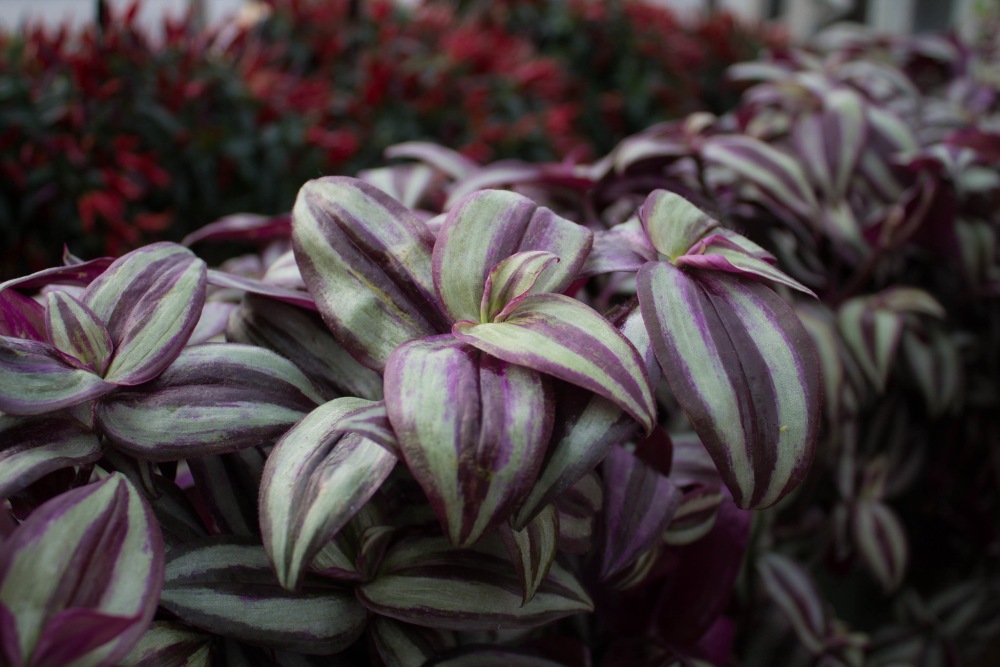
Many horticulturalists claim that the wandering Jew plants are the perfect houseplants no matter where you live or how little skill you have with plants. There are many facts to support this claim even if it sounds outlandish and we’ll go through in detail. But the question here is which wandering Jew plants to grow? This umbrella name refers to a wide variety of plants in the Tradescantia family. Each one of them has some value to add to your home. From brighter blooms to more colorful foliage. But all these varieties of the wandering Jew plants share one thing in common and that is they are easy to grow and care for.

Reasons to Consider Wandering Jew Plants in your Home
So let’s dissect this claim that the wandering Jew plants are perfect for all homes. We have covered many plants that were easy to grow and didn’t need much attention. What makes the wandering Jew plant so special? Well, there are a few reasons for that.
- These plants are natural air purifiers . The wandering Jew plants absorb carbon dioxide and toxic particles out of the air leave your house smelling fresh and healthy.
- In the realm of houseplants, this species likes to get attention with their showy foliage .
- They also absorb heavy metals out of the soil.
- The wandering Jew plants are known to self-propagate. They practically ask for no input from you when they reproduce and make new plants.
- They are hardy plants that can handle drought, fluctuating lighting, poor soil, and many other adverse conditions.
- Even if they happen to die on your watch, you can still start a brand new plant just with a leaf node from the old one.
- They thrive in small pots or hanging from baskets where they make a real colorful splash with these delicate tendrils.
- Finally, there are many varieties to choose from and they are easy to find in your local nursery.
Wandering Jew Plants Basics
Native to South America, the wandering Jew plants (Tradescantia) are perennial evergreens that combine three types of plants under this common name. They’re sometimes called spiderwort, purple queen, and inch plant depending on whom you ask. But the fact that they’re tropical plants doesn’t mean you can’t grow them in your home. That’s the beauty of houseplants. You have control over the temperature and humidity levels allowing you to grow such exotic plants as these.
The one thing you need to keep in mind is that the wandering Jew plants are considered invasive species in many places. This is why you can’t grow them in your garden. Remember what we said about their self-propagation? Once they establish roots in an area, they spread out and claim new territories all the time. In a garden, this means they will soon take over and smother other plants in the garden before they jump over the fence and reclaim the neighbor’s garden as well.
Some of the species are flowering plants while others rarely bloom indoors. But even those that don’t flower, they still have dazzling foliage that renders the flowers redundant. Some varieties have striped green leaves with silver streaks that are a delight to look at.
Wandering Jew Plants Varieties
So which variety of the wandering Jew plants should you grow? The answer to that depends largely on your personal taste and preferences. So let’s take a closer look at each variety of this exotic family.
- Tradescantia Zebrina: One of the most popular varieties whose leaves compete for your attention with its awesome blooms. In general, the leaves are usually heavily patterned while the three-petal flowers are white. But the contrast is often breathtaking. The center of the leaves is striped in creamy patterns just like a zebra, hence the name. The rim of the leaves is usually silver that contrasts the blocks of dark green color.
- Tradescantia Fluminensis: This evergreen originates from Brazil and flowers throughout the year. With proper care and attention, it will stay with you for many years. The leaves are usually oval in shape and have a distinct glossy green look. At the end of each leaf is a node that grows out of a fleshy stem and develops into a root. If you don’t prune the plant regularly, it will spread out and claim every inch of space available. It has USDA hardiness zones between 9 and 12 and favors warm climates and plenty of sunlight.
- Tradescantia Pallida: A showy variety that hails from Mexico. Its leaves are the source of its pride. Each leaf is about 7 inches long and when it matures, it turns purple with red or green tips. The small flowers bloom in various colors from pink to white and lavender. Unlike other varieties, the pallida plant doesn’t grow tendrils, rather its fragile stems break easily and grow into new plants on their own. It doesn’t tolerate cold temperatures well especially if the temperature drops below 50 degrees Fahrenheit.
How to Grow Wandering Jew Plants
As with exotic or tropical plants, you need to recreate conditions similar to the plant’s original habitat. This ensures the wandering Jew plants will keep growing and flowering year after year in your house. The good news is, these evergreens are easy to grow. As we have seen, they even self-propagate. Here are the easy steps to grow the wandering Jew plants.
- The easiest way to grow any species of the wandering Jew plants is through a cutting.
- Use a clean and sterilized knife to cut a healthy stem of a mature plant.
- Remove any dried or crispy leaves and only keep one set of leaves near the top of the stem.
- Put the stem in a glass full of water and keep it in a lit spot without being exposed to direct sunlight.
- After about a week the stem will grow roots. It might take longer than a week if the room is too cold.
- When the roots are about 2 inches long, it’s time to pot the plant.
- Fill a medium-size pot with a general-purpose potting mix . You can add peat moss, worm castings , or oak bark. However, make sure not to include peat.
- Make a hole about 4 inches deep and two and a half inches wide. Place the seedling in it and cover the hole with soil.
- Water the pot well until the water flows out of the drainage holes at the bottom.
- Keep the soil moist for the next couple of weeks to help the roots grow and establish.
Wandering Jew Plants Care
And that’s all you need to do to grow the wandering Jew plant. It’s that easy. But now, of course, comes the hard part. How to keep it growing and at the same time manage that amazing fast growth rate.
Most houseplants need well-drained soil. The wandering Jew plant thrives in loamy or sandy soil while it struggles in clay or alkaline soil. If you’re not sure that the soil drains well, add one-third portion of perlite and mix well. Many experts recommend you add a layer of gravel at the bottom of the pot to improve drainage.
Sunlight is important for the success of the wandering Jew plant. In fact, those bright three-petal flowers will not bloom without sunlight. In that respect, this perennial makes a distinction between morning sun and afternoon sun. It prefers the afternoon sun so always keep it on a window sill that faces the south or west. North and east-facing windows get the morning sun. The leaves of the plant will tell you if it’s not getting enough sun. Their color will fade and they turn yellowish. If the sun-deprivation continues, the plant might die.
Moisture is the operative word when it comes to watering. You wouldn’t want the soil to get wet but if you let it dry out, that will hurt the wandering Jew plant too. So it’s more of a balancing act. You wait for the top 3 inches of the soil to go dry before you water it. When you irrigate it, you don’t soak the soil. The roots are sensitive to water and don’t function well in waterlogged soil. This could lead to root rot, drooping leaves, and wilting stems.
Many horticulturalists recommend that you use worm castings as a slow-release fertilizer that feeds the wandering Jew plant slowly for weeks at a time. As an alternative, you can apply general-purpose liquid fertilizer at half strength. This means you should dilute it by adding about 50 percent water or using half the recommended dose. The best times to apply fertilizer are in the growing season. If you notice the tips of the leaves turning brown or looking dry, that could be the result of using strong fertilizer.
That’s where it gets serious. The wandering Jew plants are known for their fast growth rates. If left alone, they’ll grow all over the place and project a messy look. Not to mention that the plant becomes leggy. That’s when it focuses on growing long stems while leaving the base bare and ugly. Use your pruning scissors regularly to trim new shoots and keep the foliage dense and in good shape. Pinch the tip of the new shoots to encourage the plant to grow bushy.
Pests and Diseases
You need to watch out for spider mites. These little bugs feed on the leaves and flowers of the wandering Jew plant. You’ll notice small webs between the leaves, that’s a dead giveaway that you have a pest problem. Use neem oil to clean the stems and remove the webs. You could also dip a swap in alcohol and gently rub it over the leaves and stems to kill the pests.
As for diseases, the only two common ones are root rot and brown leaf tip. The first is the result of overwatering or poor-drainage soil. The second is caused by sun deprivation. Move your pot to a window that gets the afternoon sun to give the leaves their healthy and glossy look.
Your daily dose of crafts, recipes, beauty, fashion, living tips and home guides.
Leave a Reply Cancel reply
Your email address will not be published. Required fields are marked *
Home » House Plants » Wandering Jew
Tradescantia Pallida Care: Growing The Purple Heart Plant

Tradescantia pallida [trad-es-KAN-tee-uh, PAL-lid-duh] has striking purple evergreen leaves, providing a splash of color throughout the year.
The purple Tradescantia is part of the Tradescantia genus (spiderwort) of plants found throughout South and Central America, including northeast Mexico.

This tender evergreen perennial belongs to the Commelinaceae family, sometimes called the spiderwort or dayflower family.
Tradescantia pallida has several common names, including wandering Jew or walking Jew.
These common names are shared with other species from the Tradescantia genus:
- Tradescantia fluminensis
- Tradescantia zebrina
Additional common names include:
- Purple Queen
- Purple heart plants
- Purple secretia
- Purple spiderwort
- Purple heart spiderwort
- Purple wandering jew
- Tradescantia purple heart
These indicate the purple foliage and its heart-shaped leaves.
The common name Tradescantia purple heart refers to the fact that this plant is part of the spiderwort family.
In this article, we’ll delve into everything you need to know about proper purple heart wandering jew care.
Grooming Purple Leaf Tradescantia Plants
To propagate purple heart with cuttings, tradescantia pallida care.
Caring for Tradescantia pallida is relatively easy, making it a popular choice among gardeners and plant enthusiasts.

Size and Growth
Tradescantia pallida (synonym Setcreasea pallida) is a relatively delicate plant with thin stems. It grows in short mounds, reaching a height of just 8″ inches.
The trailing stems spread up to 18″ inches or more and produce shockingly purple evergreen leaves.
The v-shaped leaves are narrow and measure 4″ to 6″ inches long. When grown outdoors, this purple queen wandering jew can provide weedy ground covers.
The stems of Purple Heart are fragile, especially with younger plants. If kicked or stepped on, the stems may break.
Flowering and Fragrance
The spiderwort purple plant blooms throughout the warmer months, producing small, three-petaled flowers.
The small pink flowers rarely measure more than 1.5″ inches in diameter.
They appear in clusters and don’t produce a scent.
Light and Temperature
Tradescantia pallida purple heart grows best in partial shade and will tolerate full sun areas.
It shouldn’t receive direct afternoon sunlight for over an hour or two. Too much direct sunlight causes the leaves to fade or scorch.
While purple spiderwort Tradescantia thrives in the shade, full sun or bright lighting helps bring out the color in the purple leaves.
NOTE: If the plant receives a lot of sunlight, the soil should be kept moist.

The tender purple queen plant can’t survive freezing conditions.
It’s often grown in gardens as an annual in regions with mild climates and indoors as a houseplant in cooler areas.
The purple snake plant is winter hardy to USDA hardiness zones 10 and 11.
When grown indoors, it should receive filtered light for at least eight hours per day.
If possible, try to move the spiderwort purple plant outdoors during the warmer months of spring and summer to encourage brighter foliage.
Watering and Feeding
Water moderately during the warmer months and sparingly during the winter.

The purple heart plant is drought tolerant and thrives on neglect.
When watering, ensure there are adequate drainage holes to prevent root rot.
Lack of humidity can also result in brown leaf tips. You can encourage humidity by moving your plant into the bathroom when showering or using a humidifier.
Add a liquid fertilizer every four weeks throughout the spring and summer.
Soil and Transplanting
Grow tradescantia pallida in loamy soil. It should offer decent water retention and good drainage.
Add organic matter, such as peat moss, perlite, or compost, to improve the quality of regular garden soil and improve drainage.
If the soil is too rich, add small amounts of sand. Transplant as needed or every few years to refresh the soil.
Moreover, if the roots extend to the edge of its current container, repotting is needed.
Proper grooming is important when caring for an tradescantia pallida.
Trim the purple leaf tradescantia plant back after flowering in the fall to manage its growth. Yearly grooming also encourages bushier growth.
Trimming plants before bringing them indoors for the winter also helps produce bushier growth the following year.
Related: Assorted Inch Plants to Grow and Collect

However, be careful when handling this trad purple plant, as the juice from the stems and leaves can cause skin irritation.
How To Propagate Purple Heart Plant
Purple heart wandering jew is easily propagated using stem cuttings.
Take cuttings from a healthy, mature Purple heart plant using a clean, sharp knife or a pair of scissors when the plant is actively growing.
Indoor plants may grow year-round, while outdoor plants mostly grow in the spring and summer.
- Cut a section measuring at least 4″ inches long and containing several leaves.
- Place the cutting in a glass of water and set it on a windowsill with bright sunlight.
- Within a week or two, the cutting should grow roots.
- After the roots appear, prepare a small pot for the cutting.
- Use loamy soil with good drainage.
- Water the soil thoroughly.
- Use a finger to press a hole big enough for the bottom portion of the cutting.
- Place the cutting in the hole and lightly pack the surrounding soil so the plant sticks up.
- Set the plant in a bright spot and keep the soil moist.
- When temperatures warm in the spring, move the plant outdoors.
- Keep the wandering jew purple heart plant indoors throughout the winter.
- When grown outdoors, young shoots are susceptible to damage from strong winds.
- Allowing it to overwinter gives the plant time to grow stronger roots and stems.
- Wait until new growth develops before transplanting in-ground or moving to a larger container or hanging basket.
Purple Heart Plant Care: Pests or Diseases
Tradescantia pallida doesn’t suffer from any serious insect or disease issues.
It’s a tough plant and grows easily in most conditions.
A few potential issues include damage from common pests like caterpillars, snails , aphids, vine weevils, and mealybugs when growing young plants outdoors.
Remove these critters by hand or add a layer of gravel, wood chips, or diatomaceous earth around the plant.
The barrier may keep caterpillars and snails away.
While the plant has an aggressive root system and trailing growth, it’s not invasive.
Tradescantia pallida aren’t toxic, but the foliage may cause mild skin irritation.
Wear gloves when handling the wandering jew purple heart plant, such as during grooming or transplanting.
Suggested Tradescantia Pallida Uses
The short, trailing growth of the purple heart plant makes it a good choice for ground cover.

The downward growth of the stems also works well in hanging baskets.
More From The World Of Tradescantia
- Have you ever asked the question: Is Wandering Jew Poisonous ?
- The patented Wandering Jew – Nanouk Tradescantia Plant
- Caring For The Tricolor Tradescantia
- Caring For The Purple Oyster Plant
JOIN Our FREE Plant Care Newsletter
By entering your email address you agree to receive a daily email newsletter from Plant Care Today. We'll respect your privacy and unsubscribe at any time.
Wandering Jew: Types, Care, and Propagation
Table of contents, • the wandering jew - an introduction.

Wandering Jew, also called the Inch plant, can be credited for starting the whole trend of plant swapping. Years before indoor plant gardening became a profitable business, friends, family, and fellow plant parents swapped cuttings of the Wandering Jew.
The Wandering Jew is native to tropical and temperate climates and grows vigorously with very little care. In fact, the name Wandering Jew comes from the fact that if the plant is left to its devices in the open, the plant will grow invasively to wander the ends of the earth.
Tradescantia Zebrina, earlier known as Zebrina Pendula, is a species of creeper loved across the globe for its bright purple foliage. When grown indoors in planters, the tradescantia can be grown all year round in home gardens, even by gardeners who have no real gardening experience.
☆ Common names
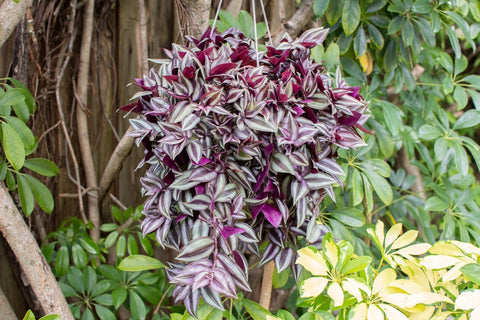
Inch plant, Spiderwort, Wandering jew, Wandering zebrina, Zebra plant
• Types of Inch Plants
This beautiful plant has over 70 popular varieties and more often than not you can find most of these varieties in your neighborhood growing with abandon in either hanging plants or as ground cover. Some of the most common tradescantia varieties are:
1. Tradescantia Fluminensis
This variety has fleshy ovate leaves with white and green variegations attached to fleshy stems. It has triangular white flowers with three petals.
2. Tradescantia Zebrina

The variegated leaves resemble the stripes of a zebra, the purplish-green leaves have a silver edge. One of the hardiest and quickest growing wandering jew varieties.
3. Tradescantia Pallida
Also famous as the Purple heart plant for its deep purple foliage and light purplish-pink flower. It stands out amazingly both as ground cover and as hanging plants. Tradescantia blossfeldiana: The thick green leaves have a fuzzy texture with a white and green variegated upper side and a purple underside. The plant has clusters of beautiful blue, purple, white, and pink flowers.
4. Tradescantia Sillamontana
This plant has beautiful symmetry with leaves growing on thick succulent-like stems covered in white fuzzy hair. It produces magenta flowers in season.
5. Tradescantia Spathacea

Also famous as ‘moses in a blanket’, ‘oyster plant’, or ‘boat lily’, it's almost succulent like in nature. It has dark green leaves with purple underside growing in spiral patterns
• Wandering Jew (Tradescantia) P lant Care
The Wandering Jew plant is easy to grow in Indian climates and can add beautiful color to any home garden. A great plant for new plant parents, it is a joy to grow. Let’s take a look at the detailed guide for creeping inch plant care. Spiderwort plants are mostly carefree. One of the only points of contention in growing this as a houseplant is getting the right moisture level.
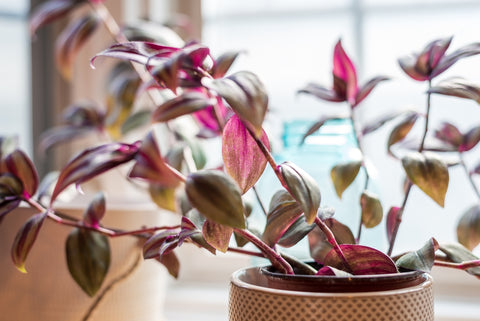
The creeping-Inch plants love bright indirect light but also do great with a few hours of direct light. Plant your wandering jew plant near a south-facing window where it can get at least 6 to 7 hours of bright indirect light. Growing your spiderwort in North-facing balconies and terraces is also a good idea. If the colour or variegations on the leaves start to diminish then it is a clear sign of low light. Shift your plant to an area with brighter light conditions.

The wandering jew plant likes its potting mix to be kept uniformly moist at all times but not soggy at all. Under indirect light conditions, water your wandering jew plant once per week or when the top soil dries out. Don't let the soil dry out completely.
However, when watering your dried potting mix, water it in batches to ensure that the soil absorbs all the water and it just doesn’t run out of the planter. Water a little and then wait for a while for the soil to soak up the water before watering it again till it drains out of the drainage hole at the bottom of the planter.
The creeping inch plant is not very finicky about the soil it grows in. It thrives in a well-draining but rich potting mix. The key points to be kept in mind is allowing the topsoil to dry in between waterings and also aerate the soil once in a while. Since the spiderwort plant loves moist potting mix, it is very important that it is well-draining and well-aerated so root rot can be avoided.
4. Fertilizers

Use a well-balanced and generic houseplant fertilizer for your wandering jew plant. They are not heavy feeders and do well with both root and foliar application every 15 days. Use a good quality fertilizer like the Ugaoo Plant Tonic for this. Dilute the fertilizer as instructed and apply directly to roots once in 15 days and put it in a misting spray and do a foliar application too once in 15 days. The foliar application guarantees bigger and showier leaves. However, don't overfeed the plant as it causes the leaves to lose their variegations.
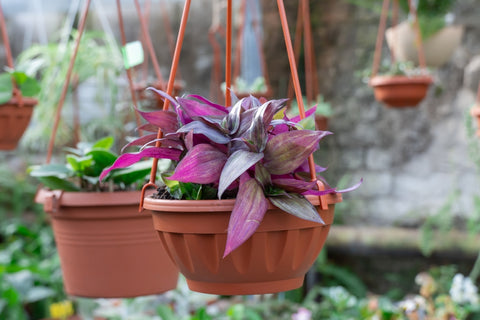
The Spiderwort plant does not require any pruning as such. Pruning for the creeping inch plant comes into play in two instances; one is to remove dead foliage and the other is to manage the shape and growth pattern of the plant. When left to its own devices, the spiderwort plant becomes leggy, to keep your plant fuller, prune the stems from time to time or pinch back at least one-fourth of the branch length.
Simply use sharp clean pruning shears or scissors to prune away stems at the required length, and cut at an incline in between leaf nodes. To remove dead or yellowing leaves, just pinch it away ensuring the leaf stalk is also removed from the main stem.
Buy Pruning Shears
• propagating wandering jew plant.
The easiest plant to propagate, the wandering jew can be propagated by anyone with a pair of scissors to take cuttings. Simply take 1 to 2-inch long cuttings of the plant, with at least 1 leaf node. Plant the cuttings in a moist potting mix or propagate in water. Keep the setup in a spot with bright indirect light.
• Problems With the Inch Plant and How to Deal with Them

Like many plants, the spiderwort can be plagued by aphids and spider mites. In case of infestation, spray the plant with neem oil solution to get rid of the pests and as preventive measures. In case of heavy infestations, prune away the infested parts.
Buy the Wandering Jew Plant
.
Share this:
- Share Opens in a new window.
- Tweet Opens in a new window.
- Pin it Opens in a new window.
- Email Opens in a new window.
- Whatsapp Translation missing: en.general.social.alt_text.share_on_whatsapp
- Betel Leaf Plant: Care, Benefits, and Propagation
- Dracaena : Care, Types, & Propagation
You may also like
The pros and cons of using a garden tiller in your garden, how to get rid of spider mites on plants, how to get rid of pesky pigeons naturally in india, essentials of outdoor gardening: things you can't miss out on.
- Choosing a selection results in a full page refresh.
- ${ item.displayLabel }$
Please try with different query 0" >or try clearing Filters. .
Please try again or visit our home page..

Reset your password
We will send you an email to reset your password
Welcome back! Sign in with
New here? Create an account
Create an account with
Or use your email
Already have an account? Sign in
Get 15% Off All Crescent Garden Planters!
Use Code: FREEDOM
Primetime Sales Event - Save Up To 50%
Use Code: ThankYou
Win $1,000 In Plant Cash - Spring Giveaway
Free Shipping On Orders $ 99 +

Your Green Thumb Support
Chat/Email Support
Mon-Thur, 7 AM - 8 PM CST
Fri, 7 AM - 5 PM CST
Sat-Sun, 8 AM - 5 PM CST
Chat Us Email Us [email protected]
Phone Support
Mon-Fri, 8 AM to 5 PM CST
Call Us 833-577-0999
- Shipping Info
Purple Wandering Jew
Proven selections, container size.
- #1 Pot = Trade 1 Gallon (~2.26-3.37 quarts)
- #2 Pot = Trade 2 Gallon (~1.19-1.79 gallons)
- #3 Pot = Trade 3 Gallon (~2.32-2.76 gallons)
- 4.5" Pot = (~1.42 quarts)
- Quart Pot = (~1.5 quarts)
- 2.5 Quart = (~2.20-2.30 quarts)
There are no standardized volumes by size and may range based on the plant. Learn More About Container Sizes
Bulk discount rates
Below are the available bulk discount rates for each individual item when you purchase a certain amount
- Buy 6 - 9 and get 5% off
- Buy 10 - 20 and get 8% off
- For Larger Orders, Give Us A Call 833-577-0999 or Email us at [email protected]
- Plant Addicts Guarantee - plants arrive happy, healthy and ready to be planted.
- Optional 1 Year Guarantee - 1 year warranty for an additional 10% of the purchase price of trees, shrubs & perennials only.
To find more details. Learn More About Guarantees
- Create New Wish List
Provide your email address below to be notified when this product is back in stock
- Description
Container Sizes
- Warranty Information
- Shipping Information
- Full Shade to Full Sun (0 - 6+ Hours Direct Sunlight)
- Mature Height 10-14 Inches
- Mature Width 10-14 Inches
- Growing Zone 9-11
- Use as a Spiller in Containers
A traditional landscape or container plant, Purple Wandering Jew also makes a wonderful house plant, bringing that rare purple/green to pink indoors year round depending on what species you plant. It is native to East Mexico along the Gulf Coast where it is a ground cover and grows in Zones 9 through 11b as a perennial. The heart shaped leaves of T. zebrinus are striped purple and silver green and the underside of the leaf is a deep purple color.
There are not too many times that purple and stripes come together in one plant. Use it as a trailer in your large containers, hanging baskets or rock walls/terraces and as a ground cover in your landscape. Wandering Jew is grown as an annual in Zones 3-7. In parts of the Southern US homeowners plant this around their mailbox posts as it has pretty pink/purple flowers in spring and summer and its low growing habit does not interfere with the mail carrier.
Purple Wandering Jew Care
Easy to care for, Wandering Jew requires moderate to moist soil, with a pH of 5.8 to 6.2, slightly acidic. A regular fertilizing program is recommended for container plants and houseplants and only occasionally for landscape plantings. Be sure to plant out after all danger of frost has passed to minimize cold damage. Wandering Jew prefers part to full shade and that is where it maintains its best color.
No deadheading is needed as this plant self cleans. The three-lobed dainty pink/purple flowers are present during the warm parts of spring into summer and appear from within the slightly overlapped leaves. Trimming your plant may be required if it really likes where it is planted as it spreads easily. Pinch back to keep within bounds and promote branching. As a member of the spiderwort family, the sap is mildly toxic to pets, so keep the plant out of their reach as a precaution.
Purple Wandering Jew Spacing
Since this annual grows prolifically in ideal conditions, spacing plants properly is important for plant health. Growing up to 14 inches tall at maturity and spreading up to 14 inches wide, it needs 10 to 14 inches of space between plants. Wandering Jew pairs wonderfully with other partial to full shade plants like impatiens and begonia, as well as a ground cover around ferns.
Purple Wandering Jew Information
Please Note: The pictures below are to give a general representation of the different container sizes. The actual size/ages of plants are estimates and will vary based on; type of plant, time of year, last pruning & many other factors.

4.5" Pot Also Known As: 4.5" Container Plant Age: ~ 6 months Plant Size: ~ 3"-6" Pot Size: ~ 4.5"H x 3.75"W Volume: 1.42 quarts
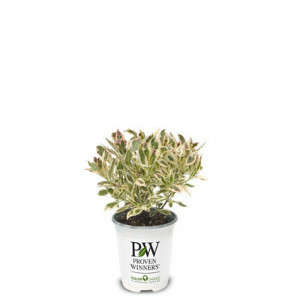
Quart Pot Also Known As: Quart Plant Age: ~ 6 months - 1 year Plant Size: ~ 4"-8" Pot Size: ~ 4.75"H x 4.5"W Volume: 1.50 quarts
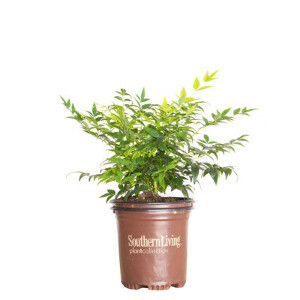
2.5 Quart Also Known As: 2.5 Quart Pot Plant Age: ~ 1 - 2 years old Plant Size: ~ 8"-12" Pot Size: ~ 6.5"H x 6.5"W Volume: 2.20-2.30 quarts

#1 Pot Also Known As: #1 Container 1 Gallon Plant Age: ~ 1 - 2 years old Plant Size: ~ 10"-14" Pot Size: ~ 7"H x 7.75"W Volume: 2.26-3.73 quarts

#2 Pot Also Known As: #2 Container 2 Gallon Plant Age: ~ 1.5 - 3 years old Plant Size: ~ 12"-18" Pot Size: ~ 9.5"H x 9.5"W Volume: 1.19-1.76 gallons

#3 Pot Also Known As: #3 Container 3 Gallon Plant Age: ~ 2 - 4 years old Plant Size: ~ 12"-30" Pot Size: ~9.5"H x 11"W Volume: 2.32-2.76 gallons
For more detailed information, please click here.
Plant Addicts Guarantee (Included On All Plant Orders)
Plant Addicts always guarantees your plant(s) will arrive happy & healthy. However, plant(s) are being shipped through the mail & sometimes accidents happen. If the plant is dead, has dried out roots or the incorrect item was shipped, just notify Plant Addicts within 3 days upon delivery. We may ask for pictures but will try to make it as easy as possible for you. Please note, plant(s) with damaged branches or wilted leaves will not qualify for this guarantee. Plants are very resilient and will rebound quickly when cared for correctly.
For more information on how to care for your new plants, please click on our guide below.
Guide: How to Care for Your New Plant(s)
Plant Addicts Warranty - 1 Year (Extra Purchase Required)
We encourage all plant lovers to purchase the Plant Addicts Warranty, whether you're a new gardener or an expert. There are many variables outside of anyone's control that can cause a plant to die. Hungry animals, drought, poor soil conditions, over watering, diseases & pests are all good examples of what can cause plants to die. The Plant Addicts Warranty is a 1 year warranty protecting you from all of the unknowns and will replace your plant if something were to happen to it.
The warranty is purchased on a per plant basis and must be purchased at the same time as the plant(s). We will cover 100% of the price of the plant, but the warranty does not cover shipping costs. SImply let us know if your plant has died within 1 year of receiving it and we will get you a new one shipped out as soon as possible (depending on the time of the year and availability). We may ask for photos for documentation purposes, but we try to make the process as easy as possible.
For more information, please click on our page below.
Guarantee and Warranty
Plant Shipping
Below are some factors we consider when determining when to ship the plants depending on the timing of the order.
Winter to Early Spring
We ship only when it's warm enough to plant in your growing zone. Sometimes plants aren't completely ready to sell and ship in early spring. We will wait until the plants are ready before shipping so you don't get a subpar product. For Southern plants we will be able to ship much earlier than plants coming from our northern nursery.
If there is extreme heat we may delay shipping for a week or several weeks. We review what areas the plants are traveling through as well as your location.
Fall into Winter
We’ll ship plants out all the way up to the end of the fall planting season!
Get your order in early to reserve your plants for Spring planting!
Once your plant is shipped you’ll receive an automated email with tracking information.
Click here for more detailed shipping information .
Planter Shipping
Standard Colors: 2-3 business days
Special Order Colors: 8 weeks - this is due to the planter being custom made with the color(s) of your choice
Please Note: On special orders there can not be any cancellations

For American Jews, interfaith weddings are a new normal – and creatively weave both traditions together
Associate Professor of Women and Gender Studies & Jewish Studies, University of Colorado Boulder
Disclosure statement
Samira Mehta receives funding from the Henry Luce Foundation for a research initiative called Jews of Color: Histories and Futures.
University of Colorado provides funding as a member of The Conversation US.
View all partners
More than 10 years ago, I attended a college friend’s wedding in New York City.
My friend is Muslim, her husband Jewish. They were married under a Jewish wedding canopy made from the groom’s bar mitzvah prayer shawl – which, his mother announced to the assembled guests, had been made in India, the bride’s parents’ country of origin. The bride wore a red wedding sari. The groom’s mother read and explained the seven blessings of a Jewish wedding ; the bride’s mother read from the Quran and then provided an English translation.
The bride and groom sipped from the same cup of wine, as one does at a Jewish wedding. But knowing that I was writing about her wedding for my book on interfaith marriages , the bride pulled me aside in between the ceremony and the photos. They had replaced the traditional wine with white grape juice, she told me – nonalcoholic in deference to the fact that she is Muslim; white out of fear of staining the wedding finery before the photos.
My friend’s interfaith wedding might seem unusual, but it is part of the American Jewish normal. Approximately 42% of married Jews have a spouse who is not Jewish . Among American Jews who have gotten married since 2010, that percentage rises to 61%.
Many advocates for interfaith families prefer not to call these marriages between Jews and “non-Jews,” because that term defines people by what they are not – erasing their own vibrant religious and cultural heritage. There is great diversity in whom Jews marry. Most spouses come from Christian backgrounds, given the demographics of the United States, but Christianity itself is very diverse. Others marry Hindus, Muslims, Buddhists or people from any number of other religious traditions.
In my research on interfaith families , I’ve seen ceremonies combine traditions in a wide array of ways.
A meaningful canopy
Sometimes the Jewish wedding canopy, called a chuppah , is simply a beautiful piece of cloth, or combined with floral arrangements. Often, though, it represents family traditions. A bride or groom might use the same chuppah as their parents, use a family prayer shawl, or have a chuppah that combines fabric from both of their mothers’ wedding dresses.
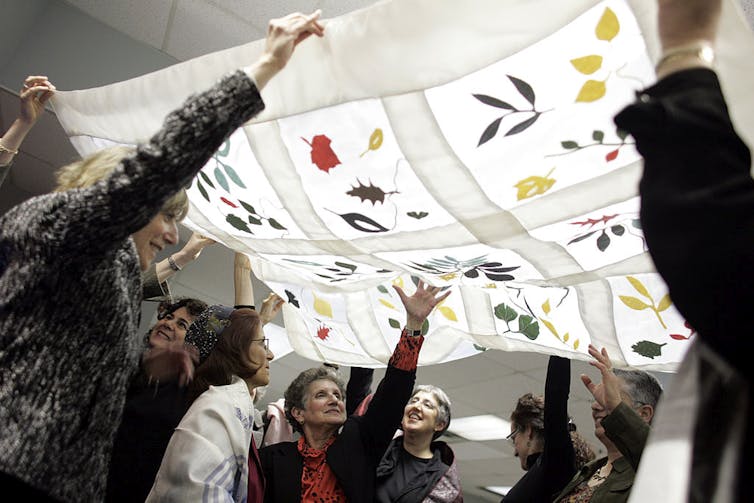
At interfaith ceremonies, the chuppah is often a way to weave another culture into the wedding. When Jews marry people from India – be they Hindu, Muslim, Christian, Buddhist or even another Jew – they will sometimes use a sari or a shawl with distinctively Indian embroidery to make the wedding canopy.
Another couple that I wrote about in “ Beyond Chrismukkah ,” a book based on my research on Jewish-Christian families, made the chuppah out of an African American story quilt that they then hung over their bed, with the intent that they would add a square for every year of their marriage. The last square that they added depicts two people standing together: her pregnant and him beaming. They laughingly told me that life got busy after the baby was born, and they are now over two decades behind.
Still another bride and groom made a chuppah decorated with symbols, some of which represented them as individuals, and others narrating what brought them together as a couple. Their design included a Star of David for him and a flaming chalice , the symbol of the Unitarian Universalist Association , for her, and then the love of books and hiking that they shared.
Getting creative
While many rabbis are not allowed to formally co-officiate with clergy from other religions at weddings, some are able to do so.
Other rabbis allow another clergy person to offer a reading or take another role in the ceremony – sometimes to picturesque effect. At one wedding, a Catholic Franciscan friar offered a blessing in his brown robe and sandals, standing under a chuppah next to a rabbi wrapped in a Jewish prayer shawl .
No matter who performs the ceremony, couples often find creative ways to incorporate their traditions into the wedding day. Many pull readings from both of their traditions: some meaningful commentary on marriage, or even the famous biblical verse I Corinthians 13 : “Love is patient, love is kind.” Jewish-Hindu couples may pair the seven Jewish wedding blessings with the seven steps taken in a Hindu wedding .
Some couples have a Jewish ceremony but make other parts of their heritage a central part of the celebration: inviting a Christian relative to say grace before the supper, for example, or greeting guests at the reception venue with a Hindu aarti , in which one of the hosts will wave trays of lighted lamps in front of the guests to show them honor, respect and blessing . Often, families will include food from the non-Jewish culture, whether it’s elaborate Italian American dinners or Chinese wedding banquets.
Other interfaith couples will surround their Jewish wedding day with traditions from the non-Jewish culture. For instance, Jewish brides traditionally visit a ritual bath called a mikveh before their weddings. Some brides in Jewish-Hindu interfaith weddings follow the trip to the mikveh with a mehendi party and ladies’ sangeet : a night of henna painting and singing.
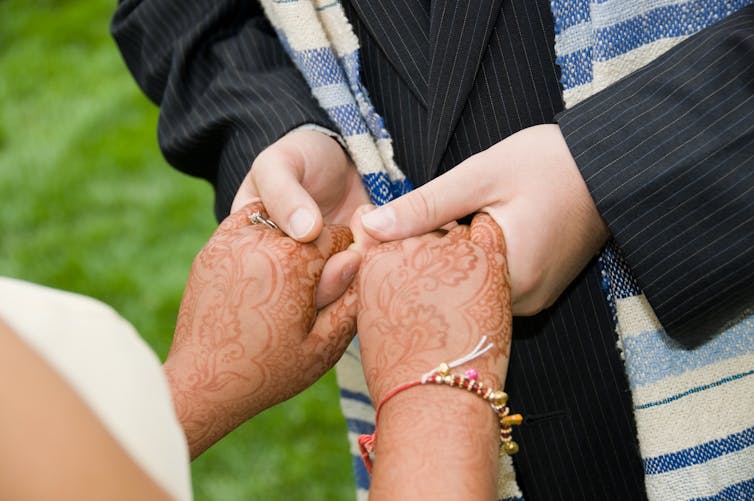
Tough conversations
Not everything is fun and easy in the world of interfaith weddings. More and more rabbis in the more liberal Reform, Reconstructionist and Renewal movements perform interfaith ceremonies. In August 2023, however, the Conservative movement reaffirmed its ban on Conservative rabbis performing interfaith marriages.
During my research on interfaith families, couples told me many, many stories about their weddings – even though, in the end, I was not really writing about weddings. Sometimes, the stories were hard. One bride’s childhood rabbi refused to perform the ceremony, angering her parents so much that they quit their synagogue of 30 years. Some couples expressed pain about grandparents or aunts and uncles who skipped the ceremony. In one case, a woman expressed relief that her father had died before her nephew announced his engagement. She was glad that her father never said to his grandson what he had said to her when she fell in love with a Protestant.
Overall, however, most people’s weddings were happy memories that offered hints to the interfaith lives and household that they would go on to create together.
- Religion and society
- interfaith families
- Jewish traditions

Head of School, School of Arts & Social Sciences, Monash University Malaysia

Chief Operating Officer (COO)

Clinical Teaching Fellow

Data Manager

Director, Social Policy

COMMENTS
Wandering Jew plants are considered a tender, evergreen perennial. Unlike annuals, and if grown in preferred conditions with proper care, Wandering Jews should live and keep on growing for quite a few years, both indoors and outside.
Wandering Jew (Tradescantia zebrina) is a trailing evergreen perennial in its native habitat (USDA hardiness zones 9 through 12). Where it's not winter hardy, wandering Jew is grown year-round as a houseplant.
Repotting Tradescantia Plants. If your wandering jew is beginning to become a bit crammed in its pot, select a pot that's 1-2″ wider than its current one. Prepare your pot with a little fresh potting soil around the sides. Remove your inch plant from its existing pot, setting the root ball into the new one.
The perennial, herbaceous Wandering Jew plant is native to Mexico, Central America, and Colombia, so it should not surprise you that it likes a good deal of humidity. To ensure high humidity levels, regularly misting your plant is a very good idea. A hand mister filled with water does the trick.
It's an evergreen perennial plant that flowers all-year-round and lasts for many years if the owner takes care of it correctly. ... The wandering Jew also prefers full sunlight during the day, and you'll need to feed it a reasonable amount of water throughout the week. The plant doesn't enjoy being dry for long periods.
The Tradescantia genus contains 75 herbaceous perennials that are collectively known as wandering jew, or wandering dude. Among these are the well-liked houseplants Tradescantia fluminensis 'Quicksilver', Tradescantia pallida 'Purple Heart', and Tradescantia zebrina 'Tricolor', each of which is known by a variety of different common ...
The wandering Jew plant is a trailing herbaceous perennial with long, slender stems. The leaves of the wandering Jew plant are typically lance-shaped and range in color from green to purple, with a silver stripe running down the center of each leaf. The leaves are also slightly fleshy and covered in fine, soft hairs.
Setcreasea Growing and Care Guide. Common Names: Setcretia, Wandering Jew, Spiderwort, Purple heart. Syn.: Tradescantia. Life Cycle: Half-hardy perennial. Often grown as an annual or as a houseplant. Height: 16 to 20 inches (50—75 cm). Native: Central and North America. Growing Region: Zones 9 to 10. Flowers: Spring to autumn, dependent on species and location. ...
To care for a Wandering Jew plant indoors, place it in a location with bright, indirect sunlight, such as near a window. Water it when the top inch of soil feels dry, typically every 1-2 weeks, and provide well-draining soil. Additionally, mist the plant occasionally to increase humidity and remove dust from the leaves.
Tradescantia is a genus of creeping, trailing, or tuft-forming tropical foliage plants. One species, Tradescantia fluminensis-commonly called wandering Jew-has handsome iridescent green and purple striped leaves.Another, T. andersoniana-known as spiderwort-looks like a small corn plant with numerous iris-like blossoms. Tradescantias are evergreen perennials in warm-winter regions ...
Formerly known as the Wandering Jew, this plant's name has evolved due to its controversial nature, with "Wandering Dude" emerging as an alternative. This plant has a rich history and a variety of uses that make it a favorite among gardeners and indoor plant enthusiasts. Tradescantia zebrina - Wandering Dude: An In-depth Look
Tips For Propagating Wandering Jew Plants. Wandering jew plants are super easy to propagate. Take cuttings that are 3-4″ long, and include a couple of leaf nodes. Dip the cut ends into rooting hormone, then stick them in moist soil. Don't allow the soil to dry out, and keep the air around the cuttings humid.
How to Grow Wandering Jew. Wandering Jew is hardy in zones 9 - 12 so most of us grow it as a houseplant. Indoors, it likes bright but indirect sun. Too much sun and the leaves will scorch. Too little sun and the color on the leaves fades. I grow mine in a north facing window with indirect afternoon sun.
Tradescantia pallida has vibrant purple foliage. Source: jam343. Originating in eastern Mexico, this particular species of wandering jew is a stunner. Its leaves, which are long and pointed, can reach up to seven inches in length. Sometimes the tips will remain red or green while the rest of the leaf turns purple.
Best known by the common name Bolivian Wandering Jew or creeping inch plant, Callisia repens (kal-LIZ-ee-uh REE-penz) is a member of the spiderwort (Commelinaceae) family. Native throughout South America, the Caribbean, and Central America. However, it has gained some popularity in the United States as a perennial ground cover in the southernmost regions and as an annual or indoor plant in ...
The wandering dude is a novice plant parent's dream: It's an easy to grow plant, has beautiful silver, green and magenta foliage, and drapes beautifully from pots.Wandering dude (Tradescantia zebrina) also is super-simple to propagate so you can make more baby plants (for free!).With its long dangling stems, this plant tends to "wander" all over the place.
It is one of the best types of wandering jew plants on the list. 3. Tradescantia pallida. It also goes by the name "Purple Heart" and is native to Mexico. Deep purple foliage, adorned with light purplish-pink flowers, looks marvelous and is the reason that it's one of the most popular types of wandering jew plants!
Ways to Train a Wandering Jew Plant. 1. Twirl It Around a Moss Pole. reddit. A moss pole is a great way to go. You can easily get one of these or even make one yourself. Once you have it ready, just stick it in the pot and twirl the Wandering Jew vines around it. 2. Train it on the Ladder Trellis.
The wandering Jew plants absorb carbon dioxide and toxic particles out of the air leave your house smelling fresh and healthy. ... this perennial makes a distinction between morning sun and afternoon sun. It prefers the afternoon sun so always keep it on a window sill that faces the south or west. North and east-facing windows get the morning ...
This tender evergreen perennial belongs to the Commelinaceae family, sometimes called the spiderwort or dayflower family. Tradescantia pallida has several common names, including wandering Jew or walking Jew. These common names are shared with other species from the Tradescantia genus:
• Propagating Wandering Jew Plant. The easiest plant to propagate, the wandering jew can be propagated by anyone with a pair of scissors to take cuttings. Simply take 1 to 2-inch long cuttings of the plant, with at least 1 leaf node. Plant the cuttings in a moist potting mix or propagate in water. Keep the setup in a spot with bright indirect ...
The Wandering Jew, also known as Tradescantia, is a popular houseplant known for its vibrant foliage and easy-going nature. With its striking leaves that come in shades of green, purple, and silver…
A traditional landscape or container plant, Purple Wandering Jew also makes a wonderful house plant, bringing that rare purple/green to pink indoors year round depending on what species you plant. It is native to East Mexico along the Gulf Coast where it is a ground cover and grows in Zones 9 through 11b as a perennial.
Many advocates for interfaith families prefer not to call these marriages between Jews and "non-Jews," because that term defines people by what they are not - erasing their own vibrant ...